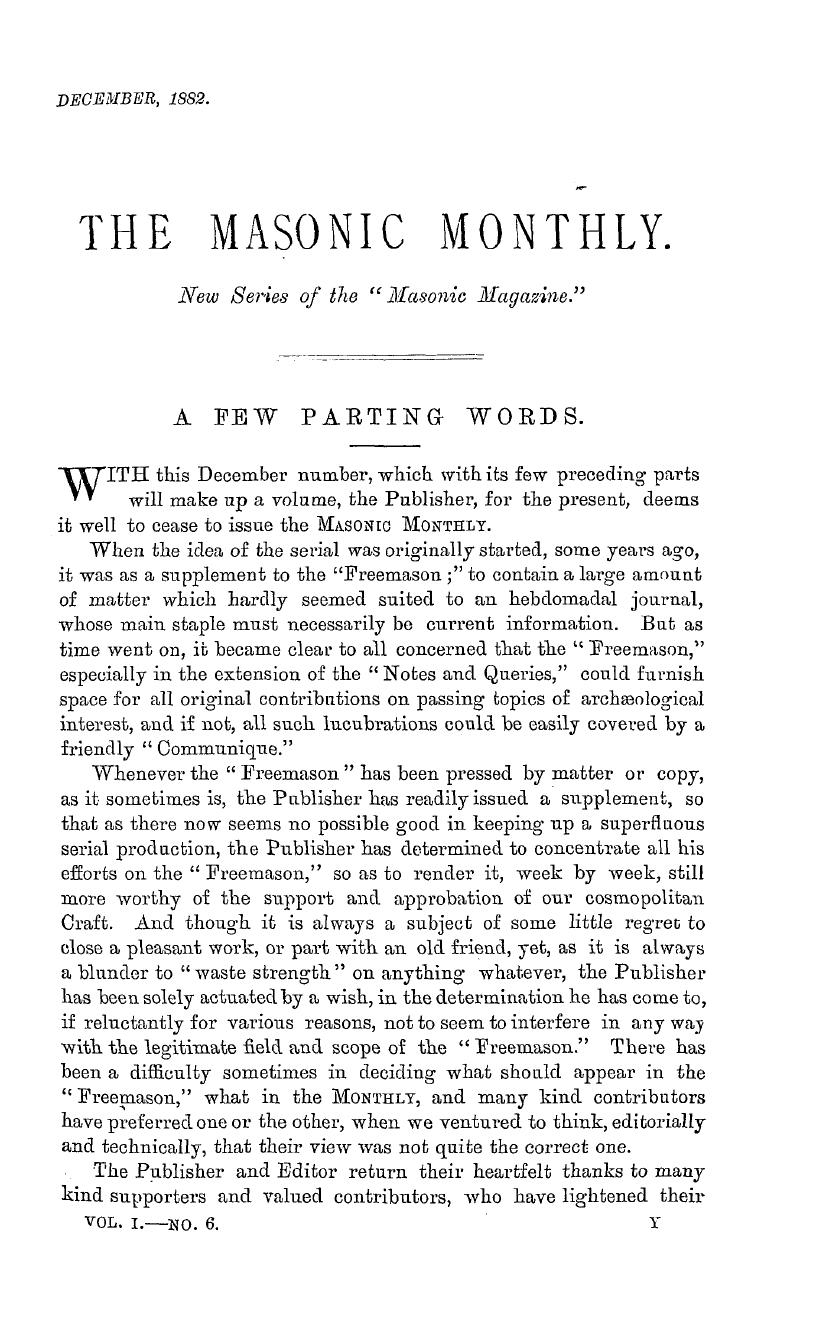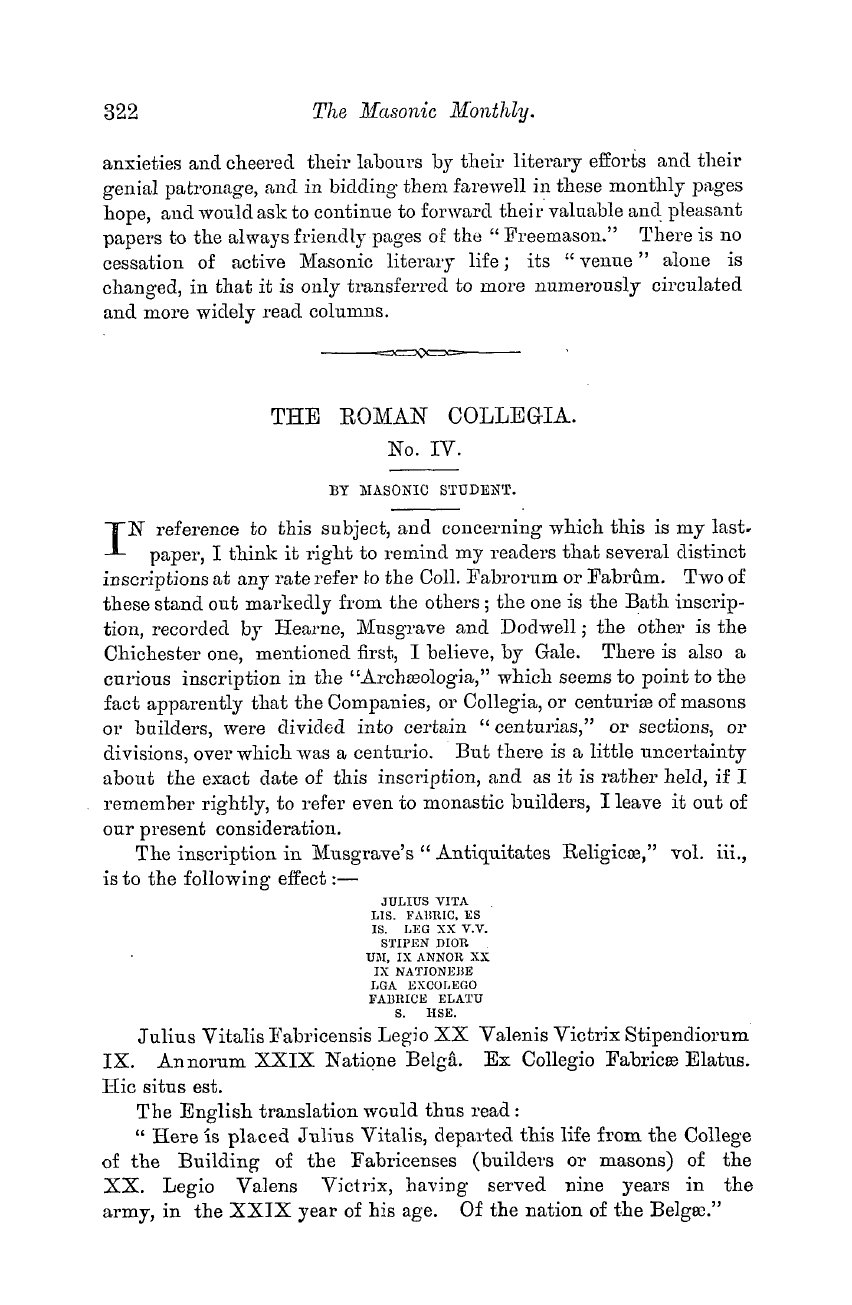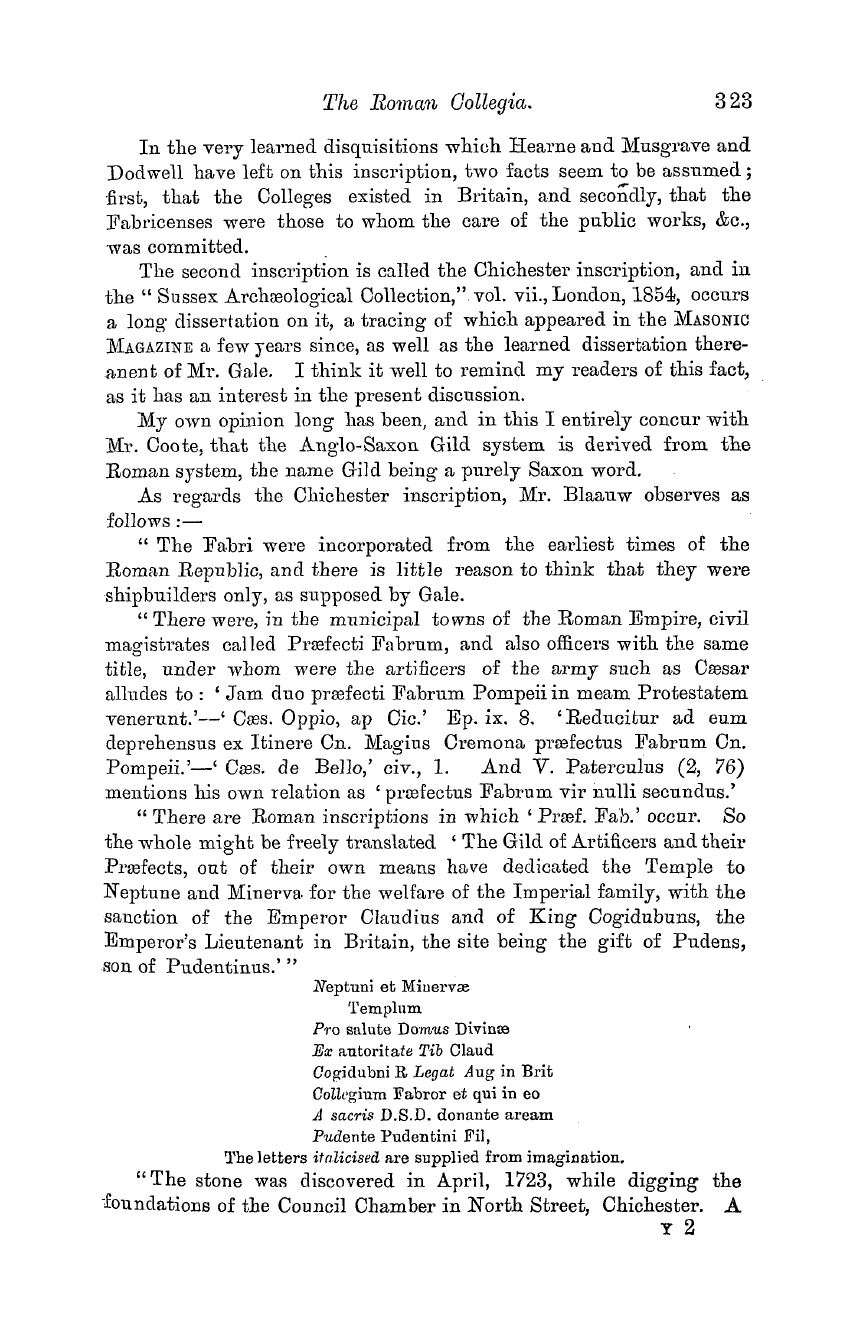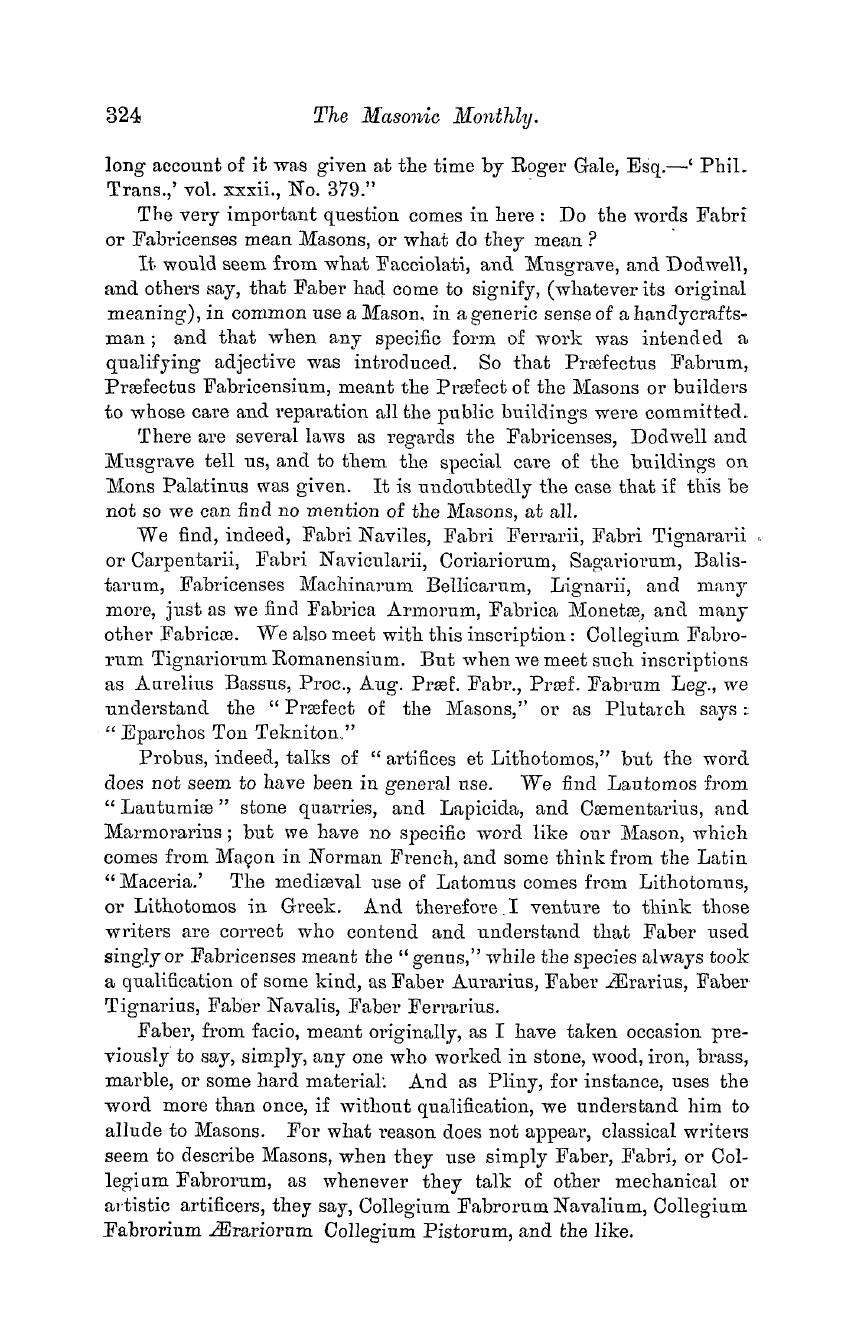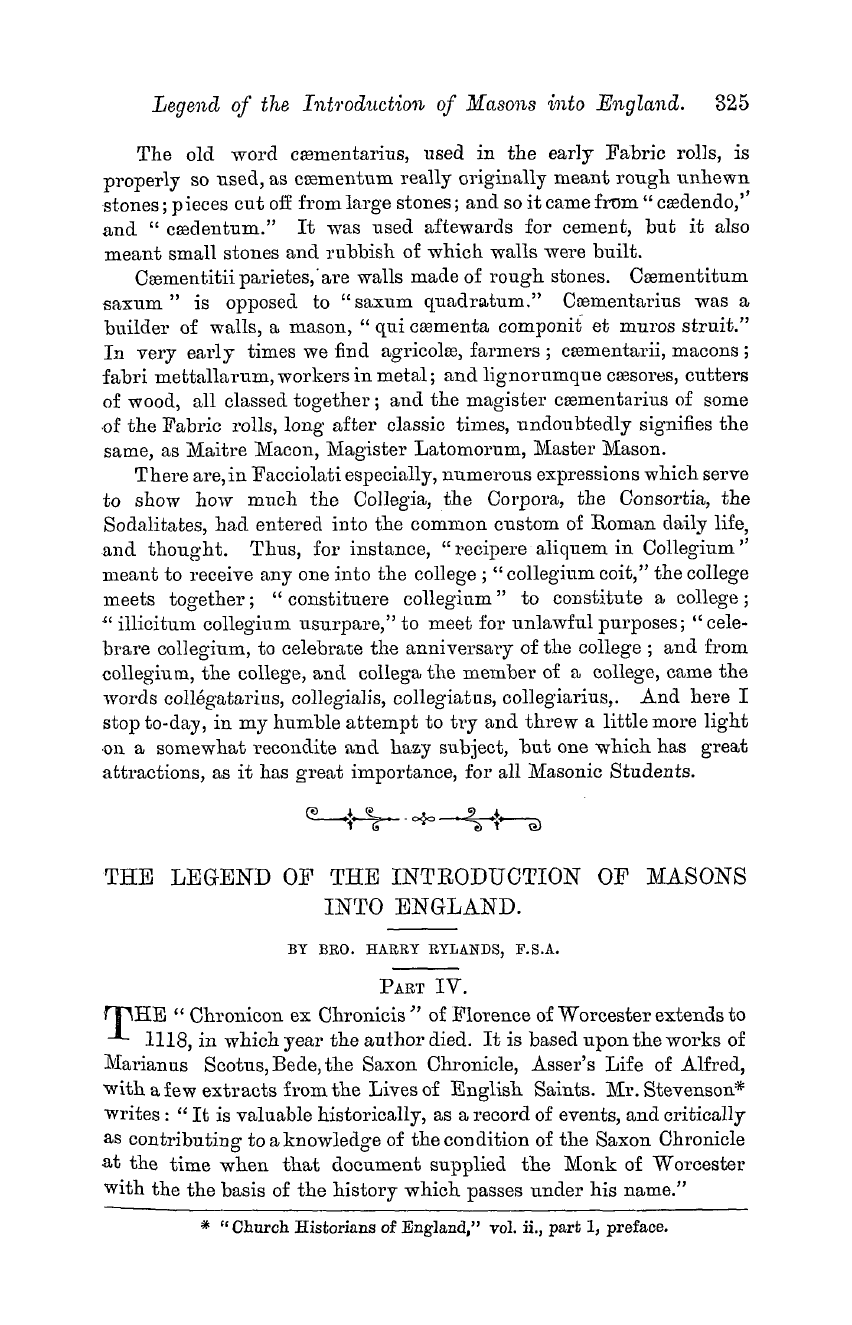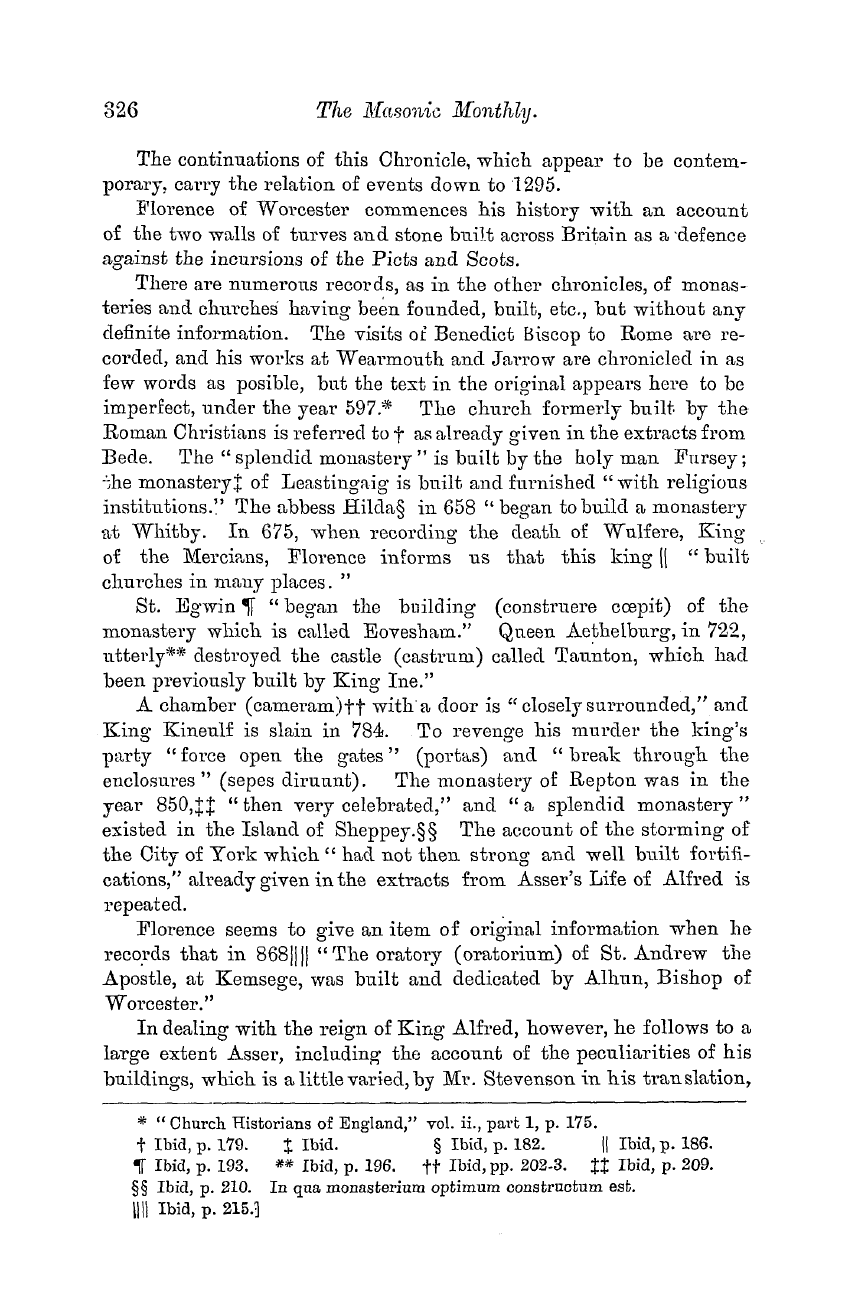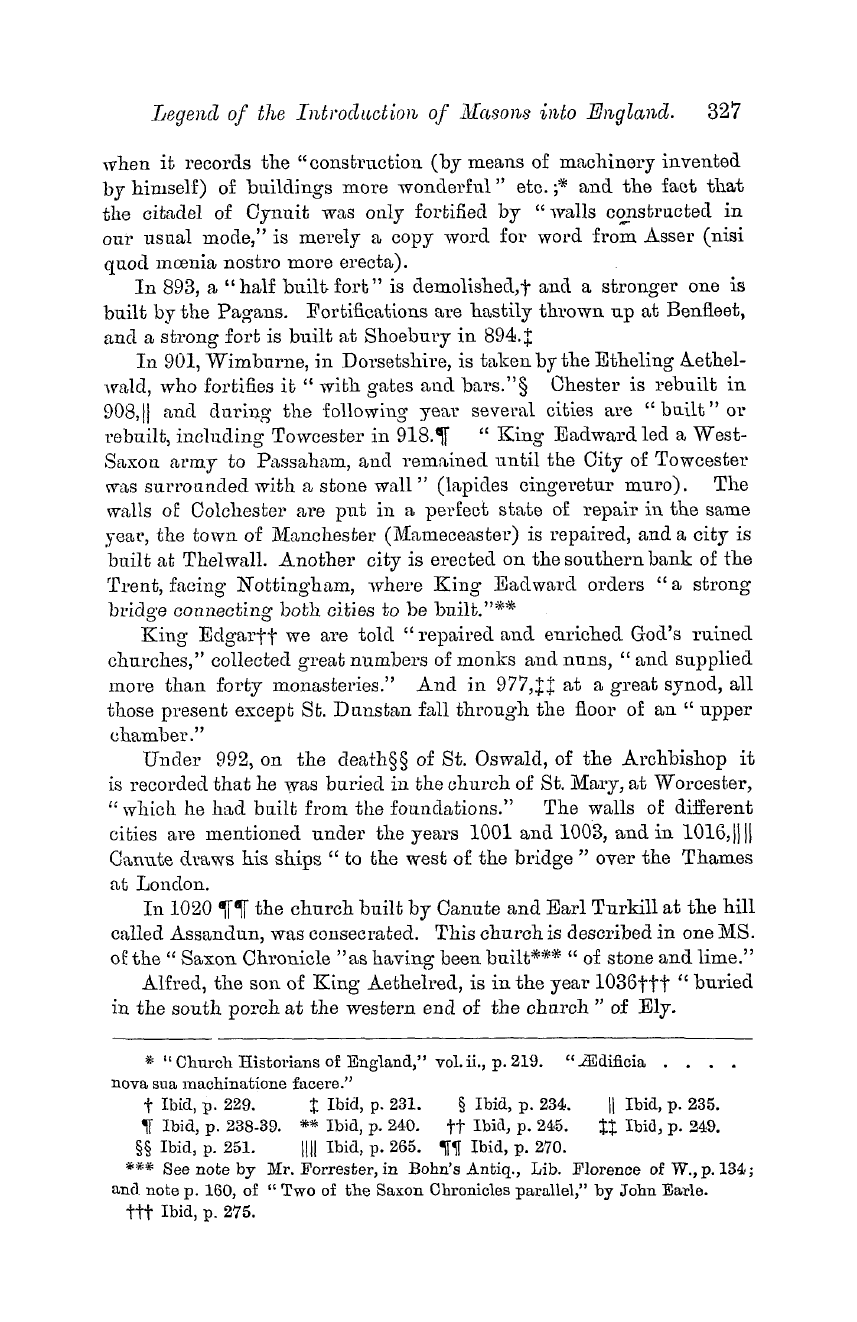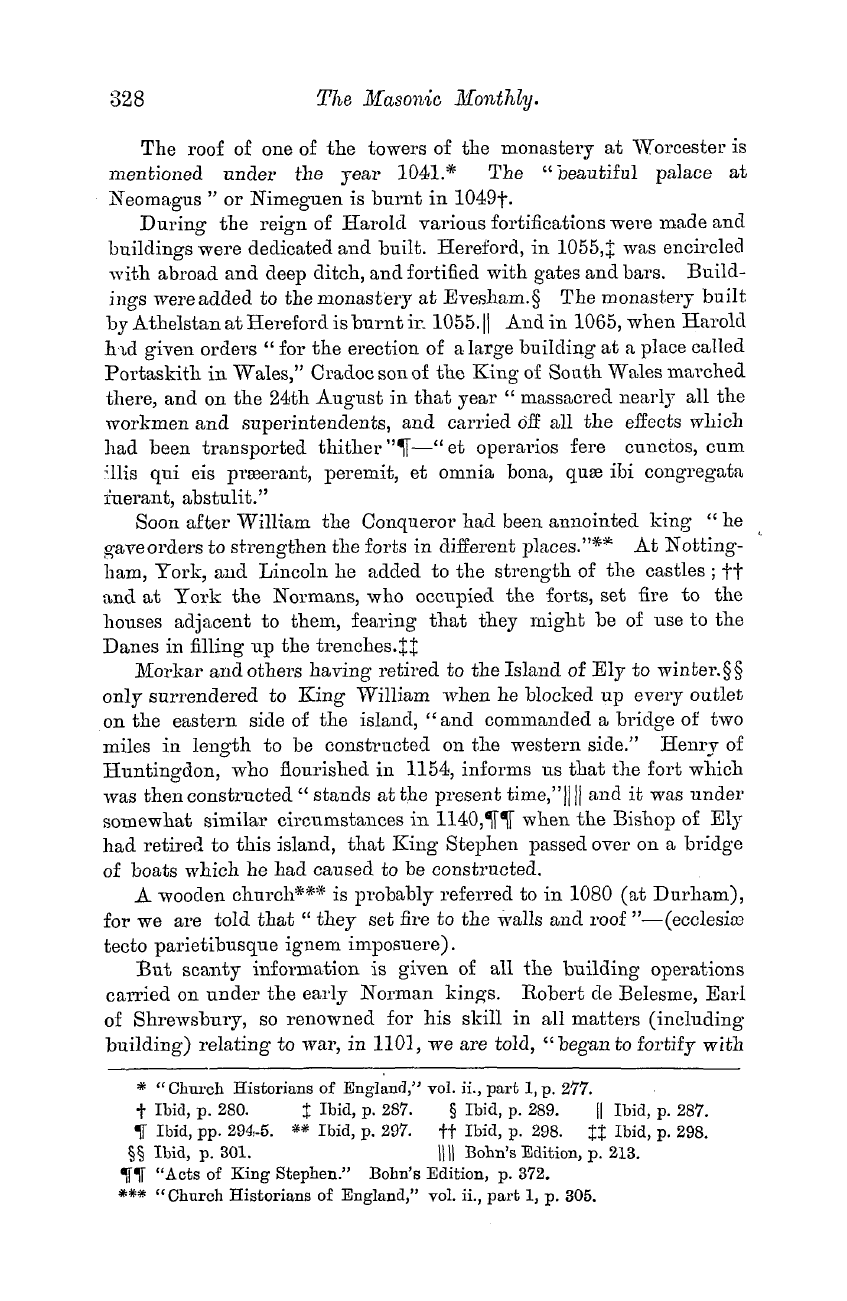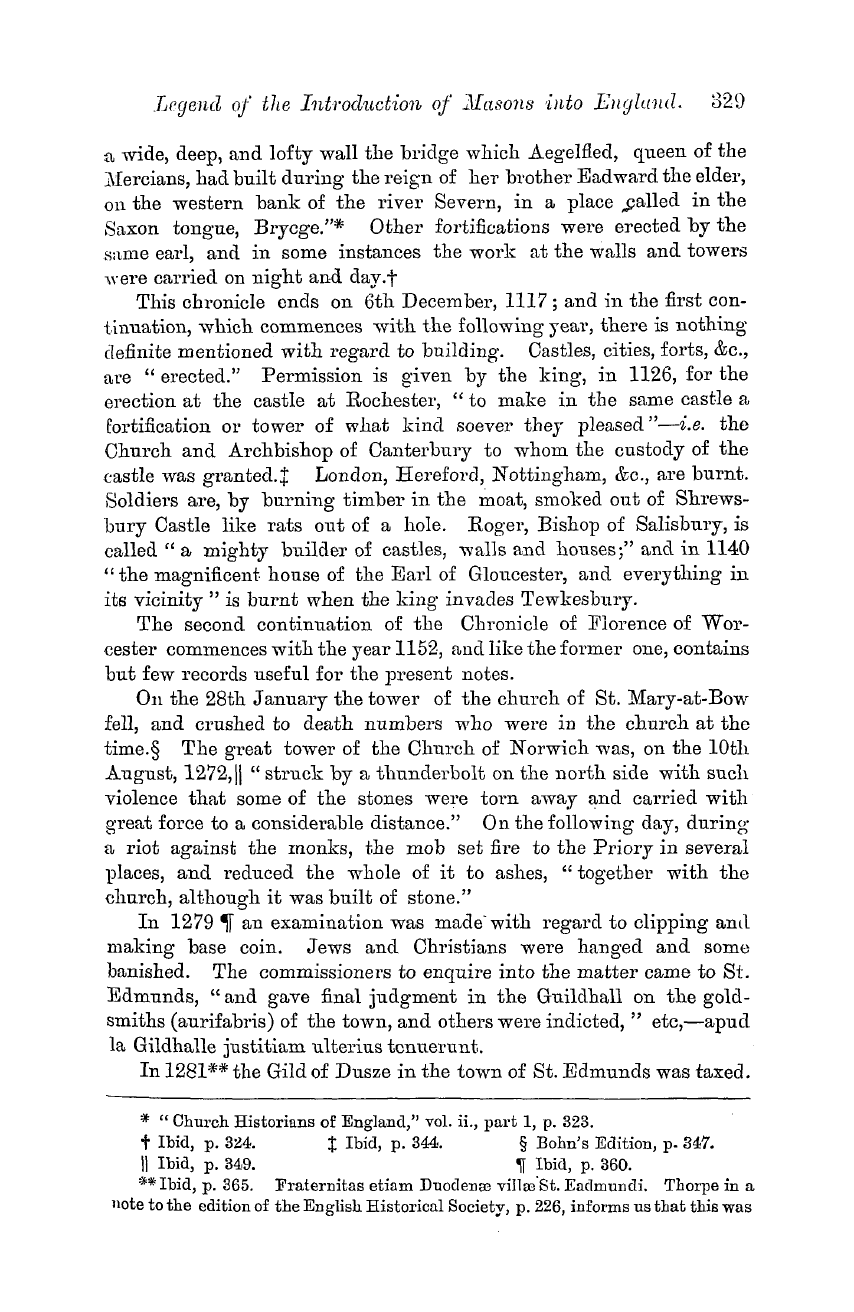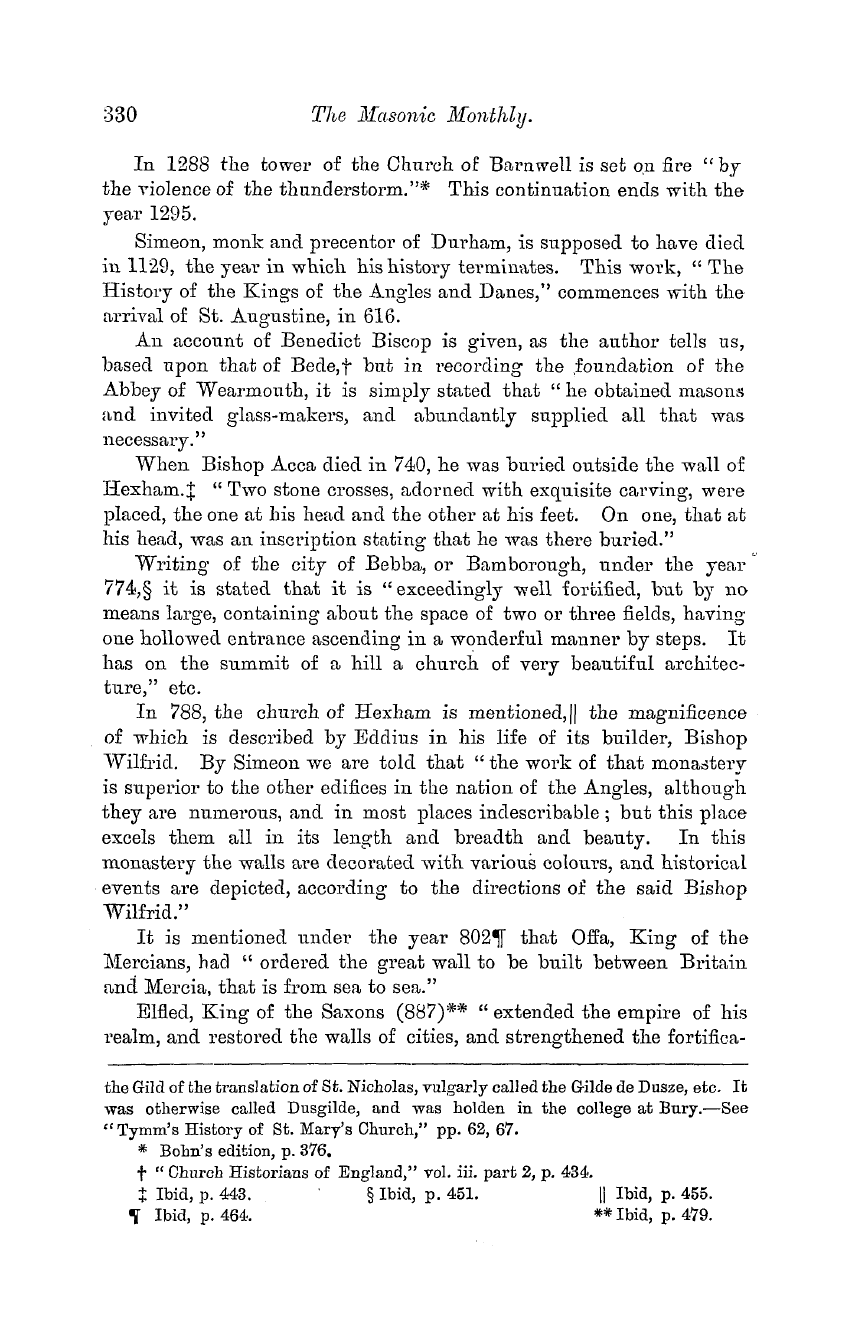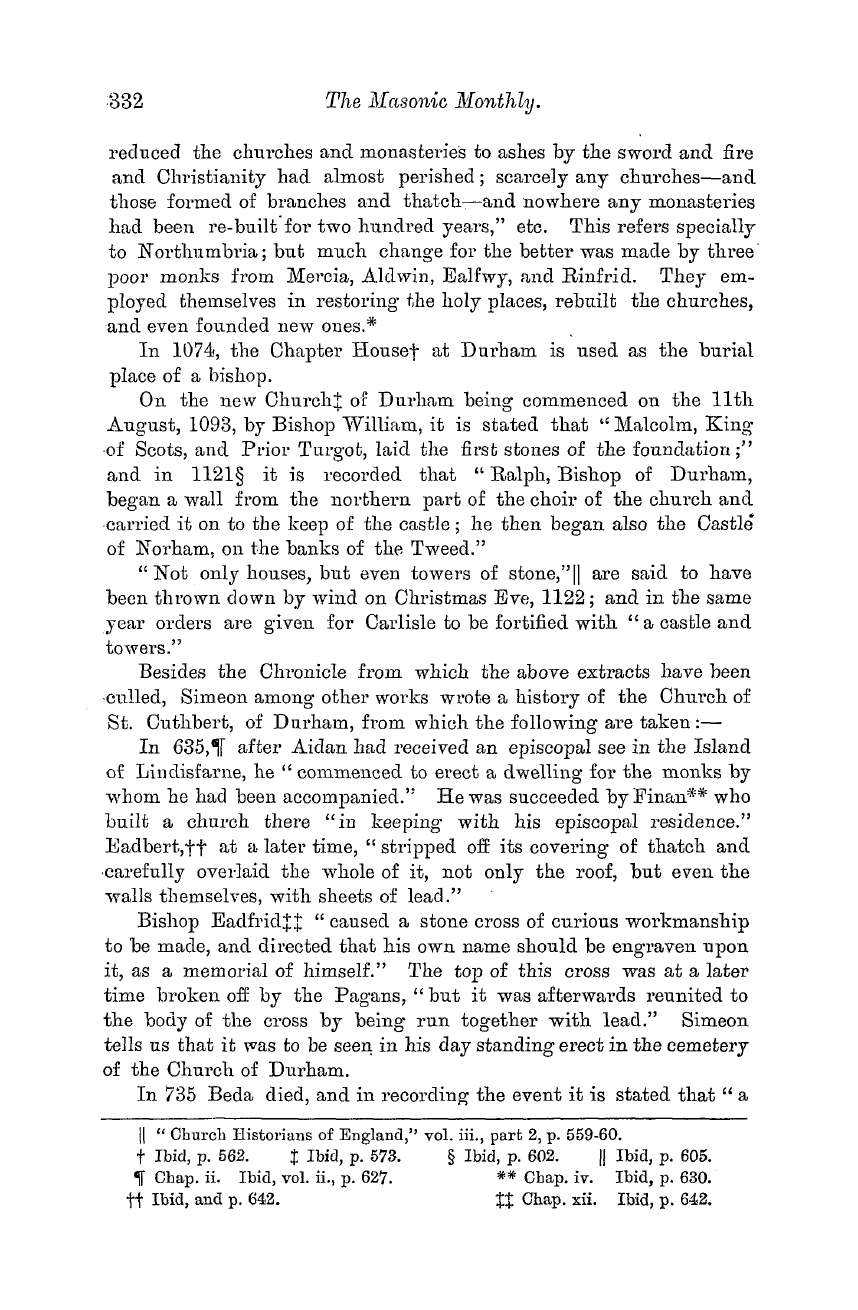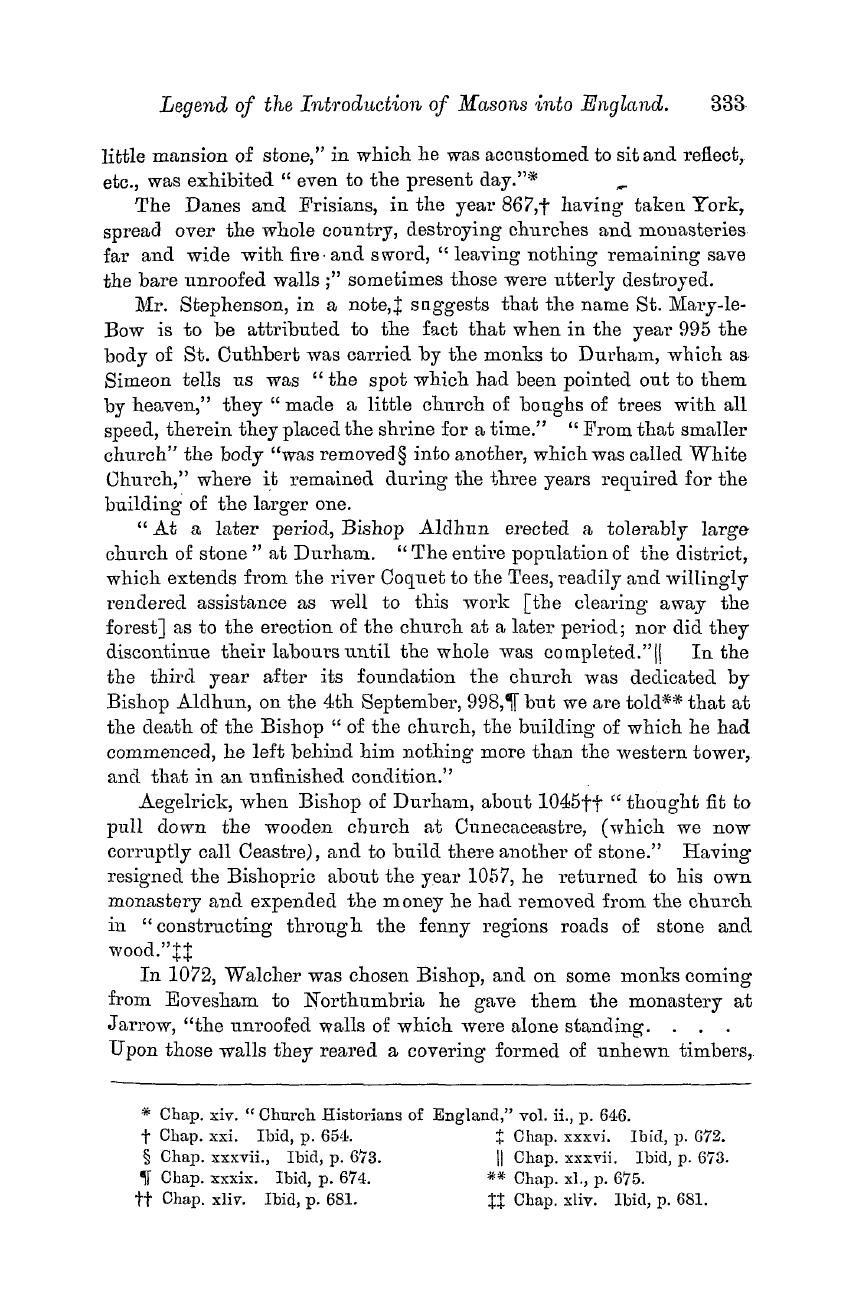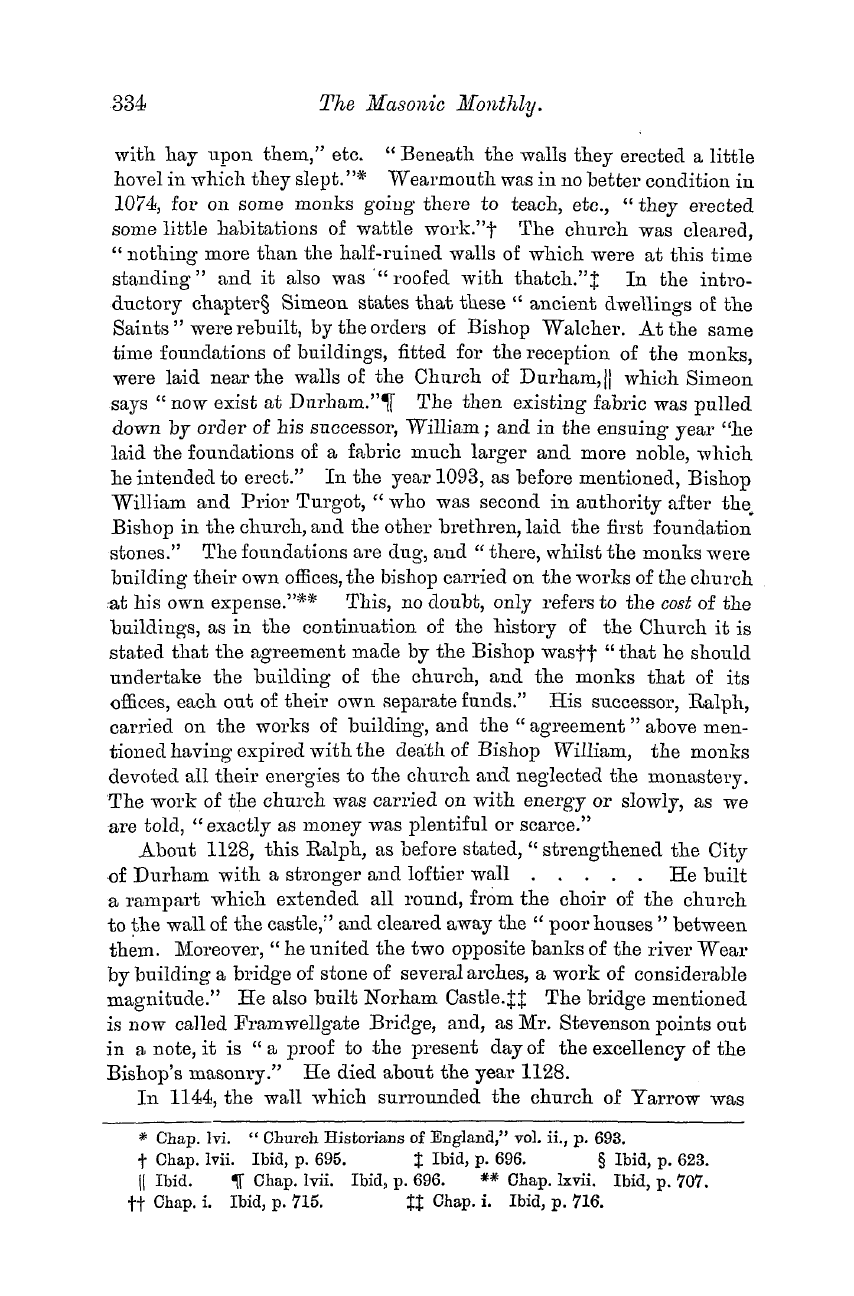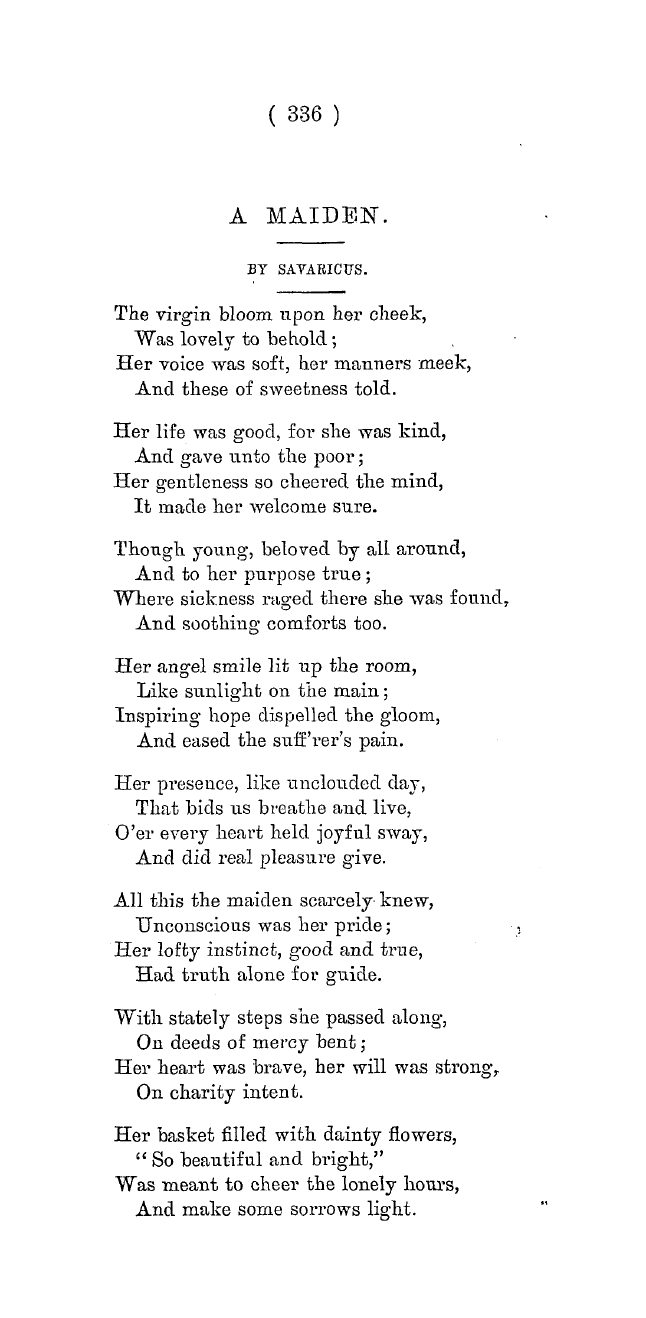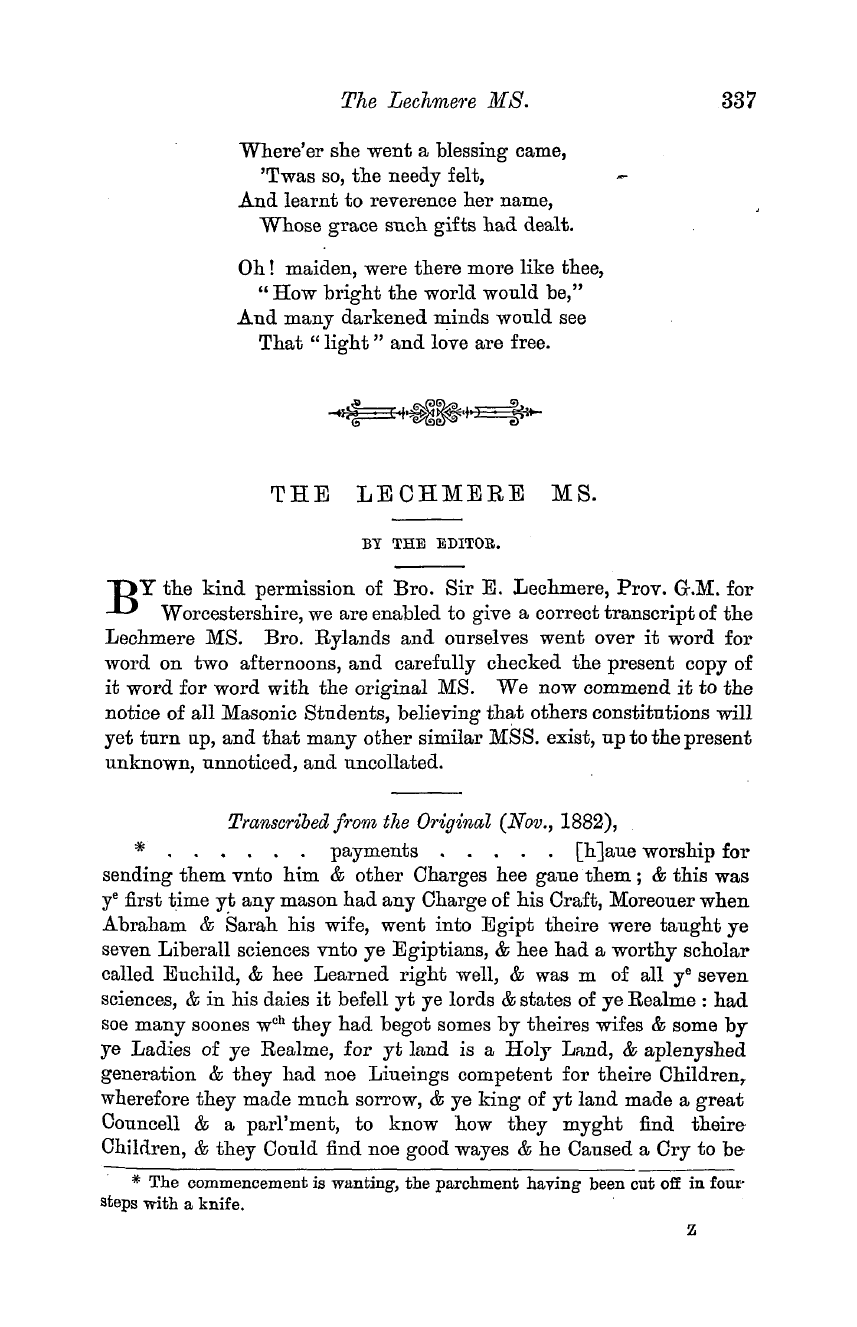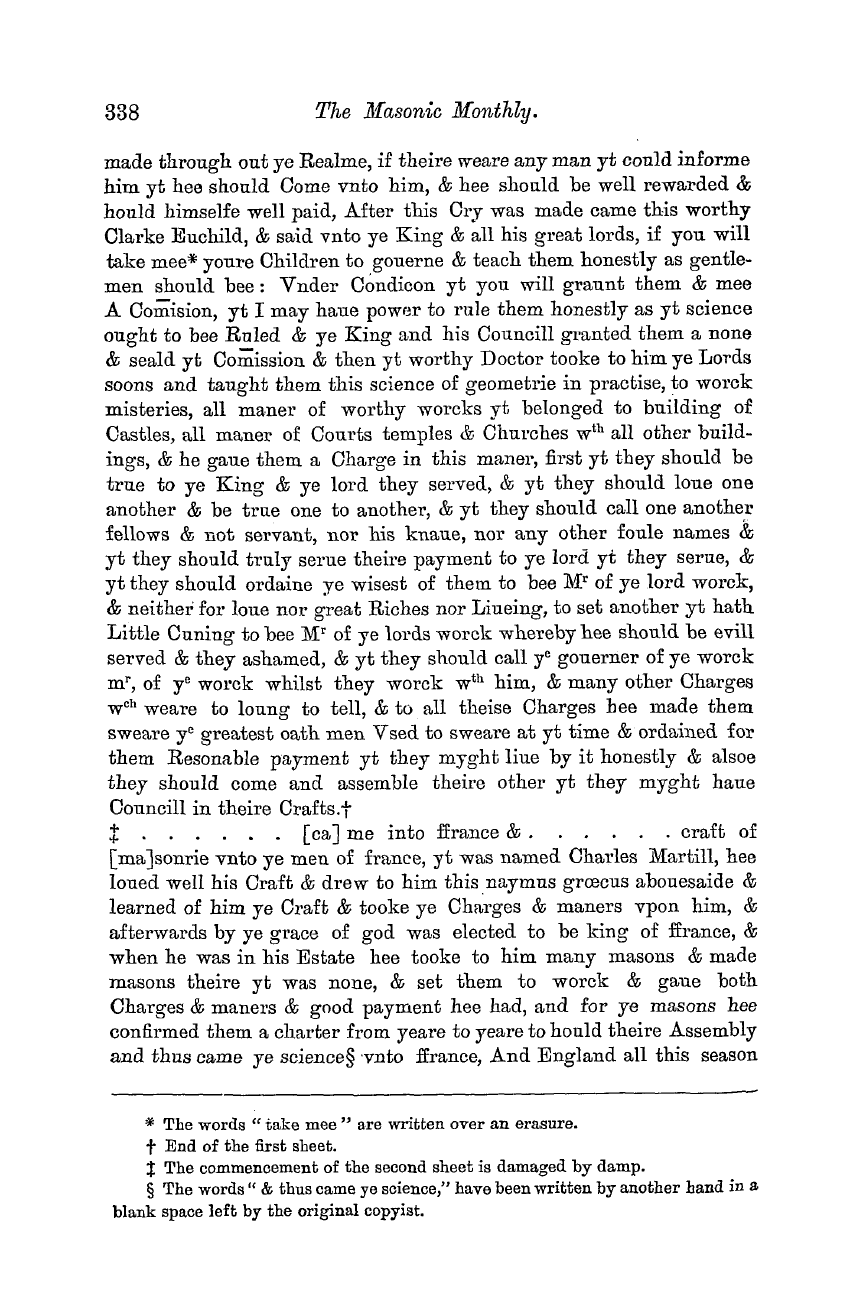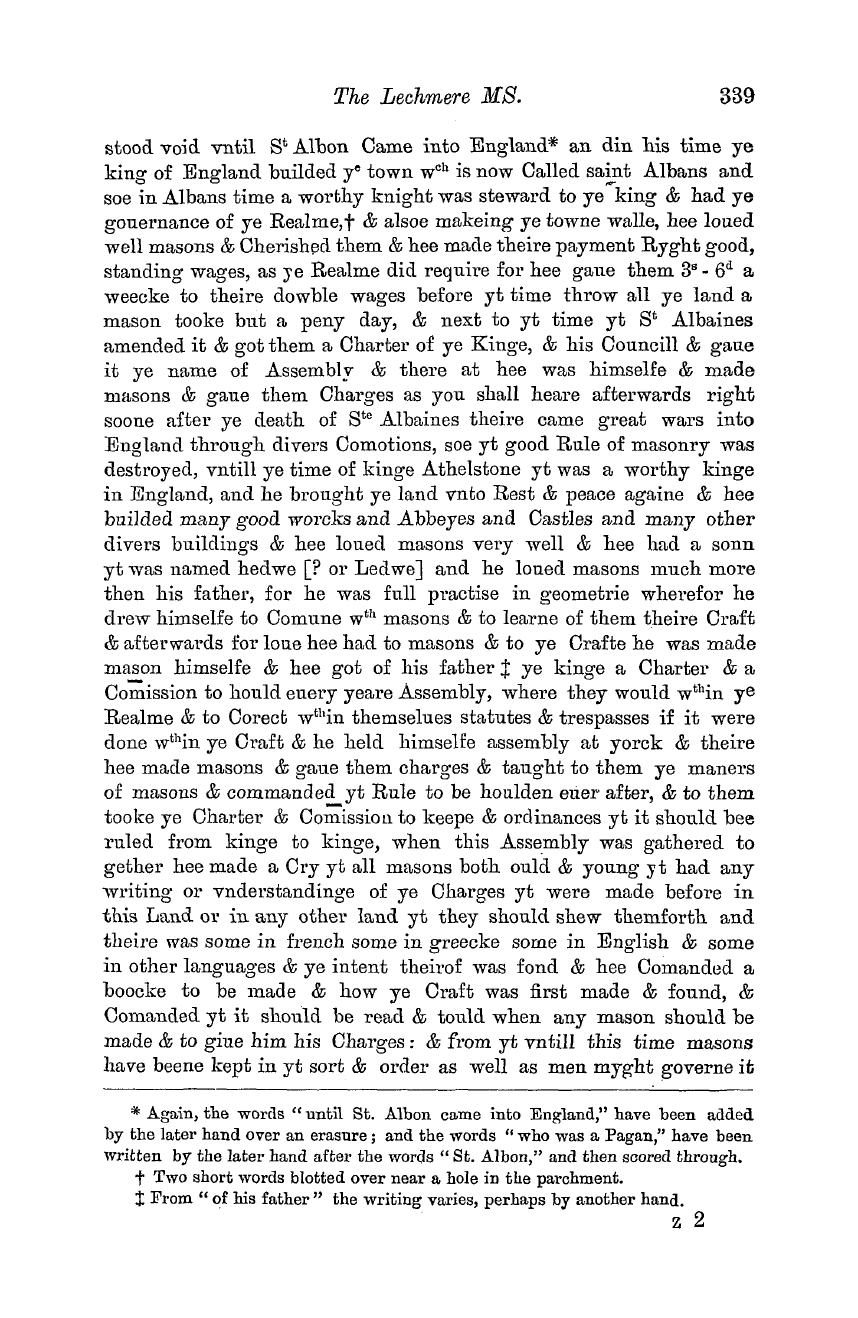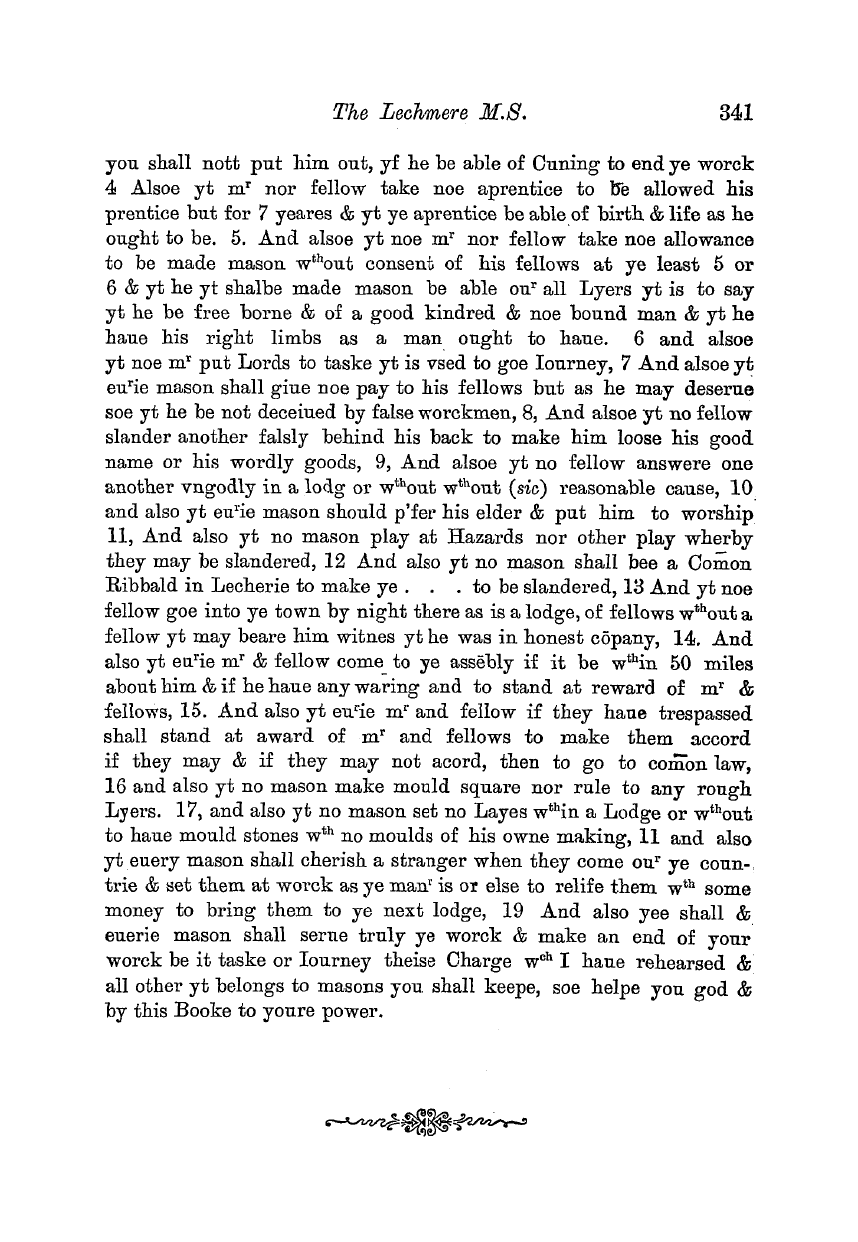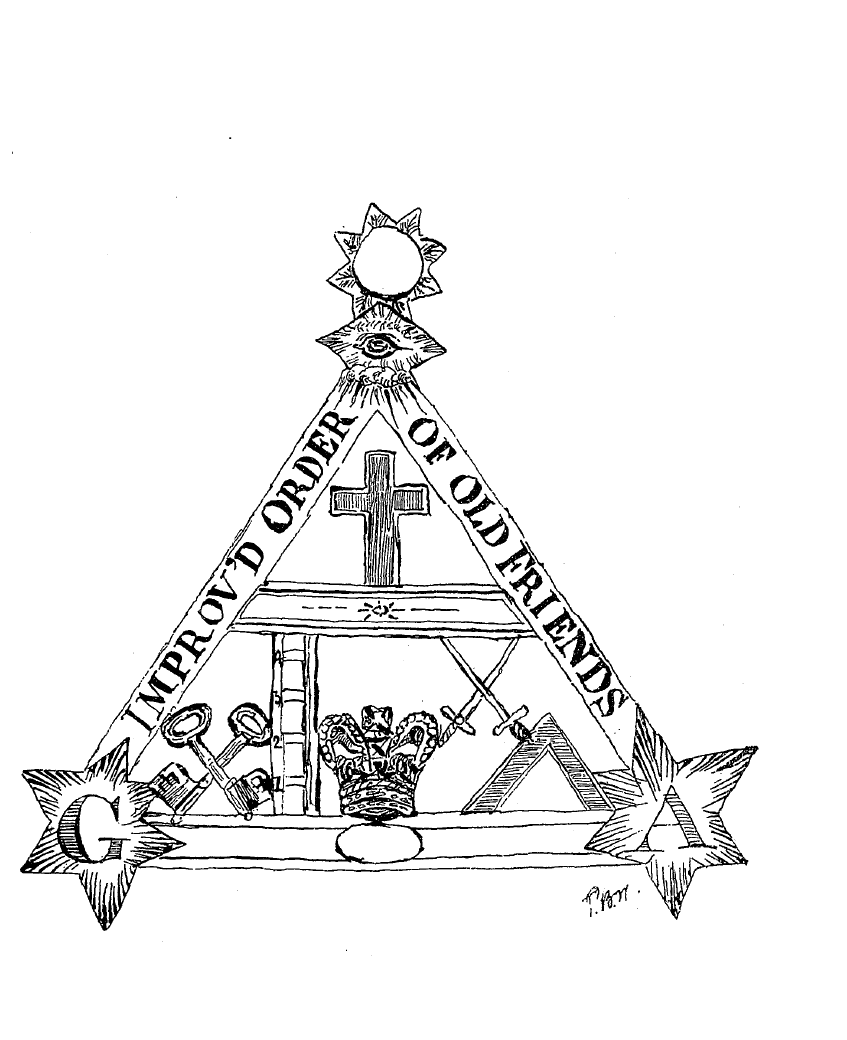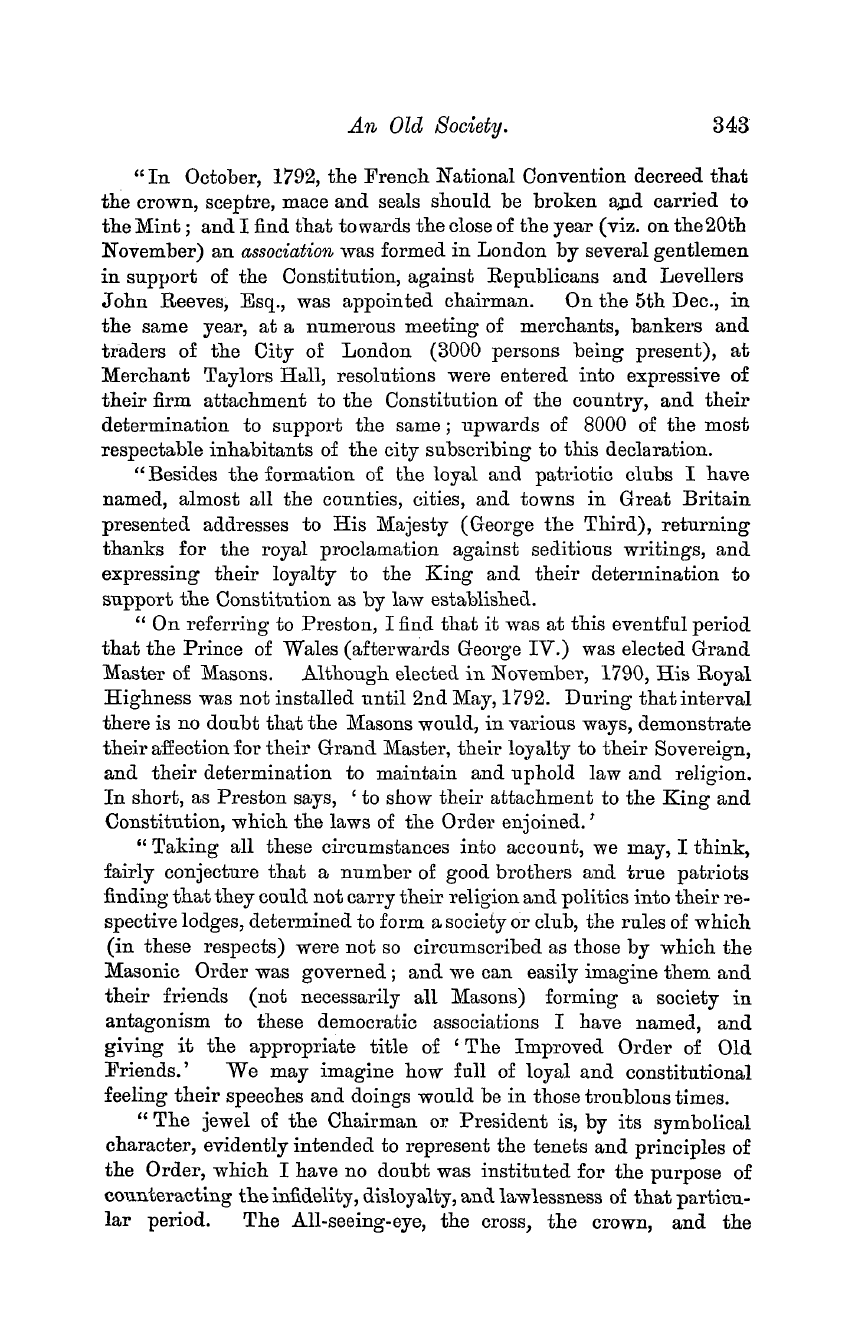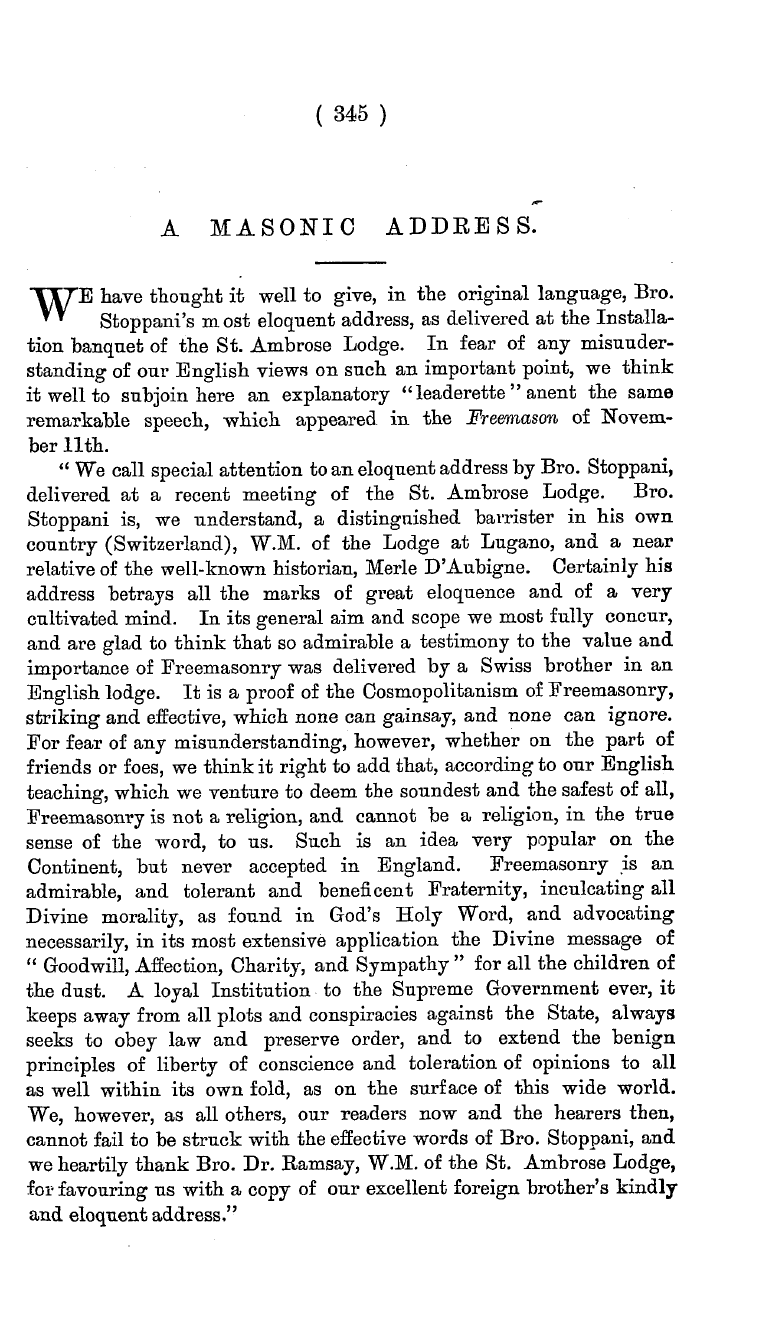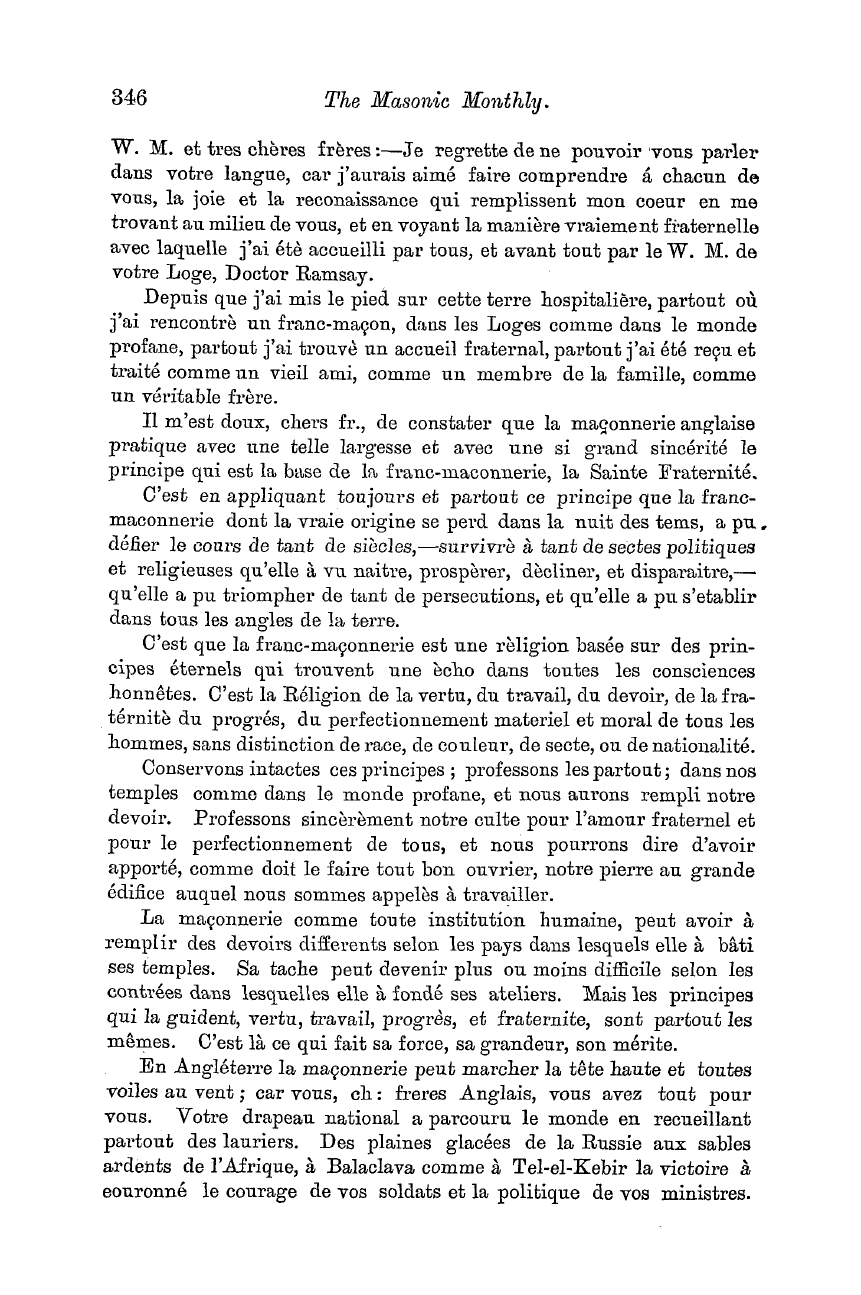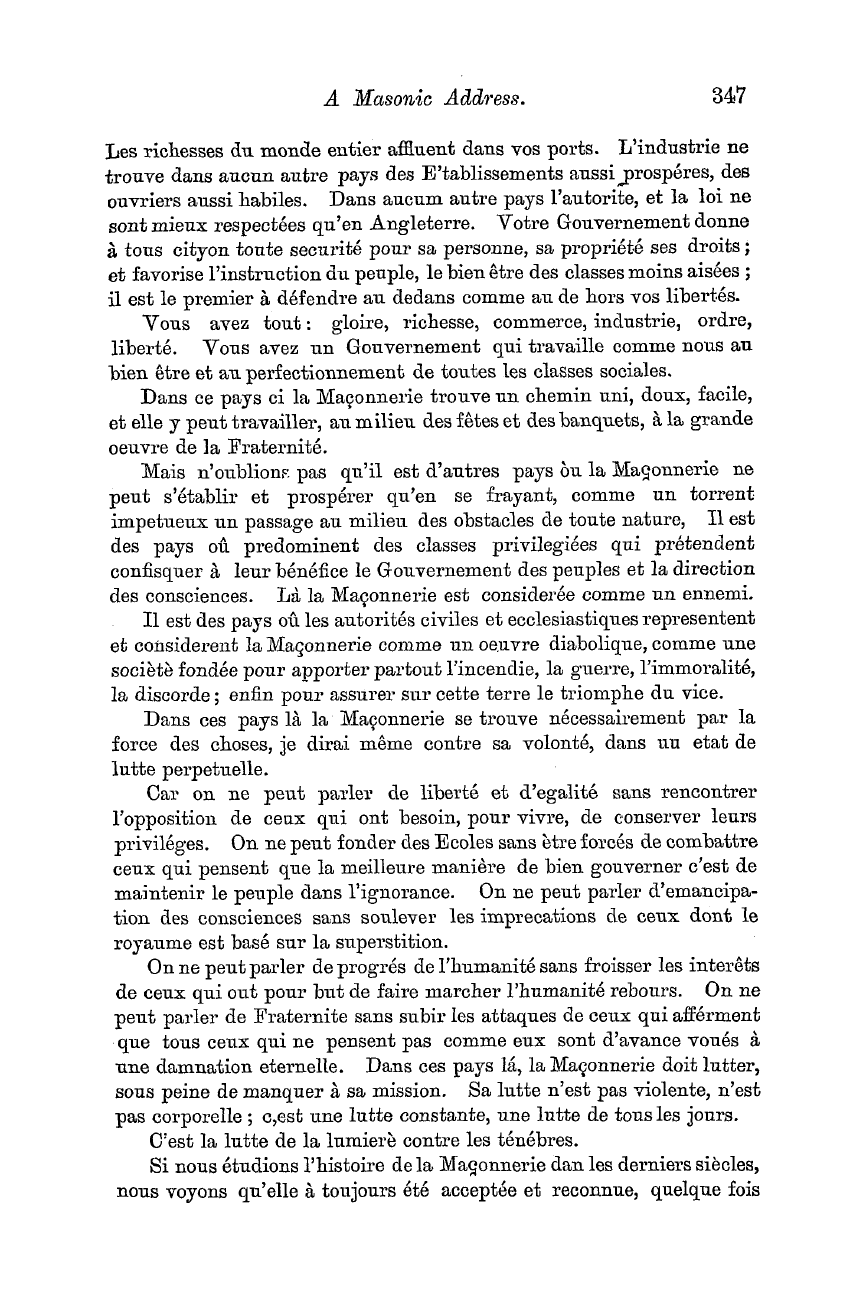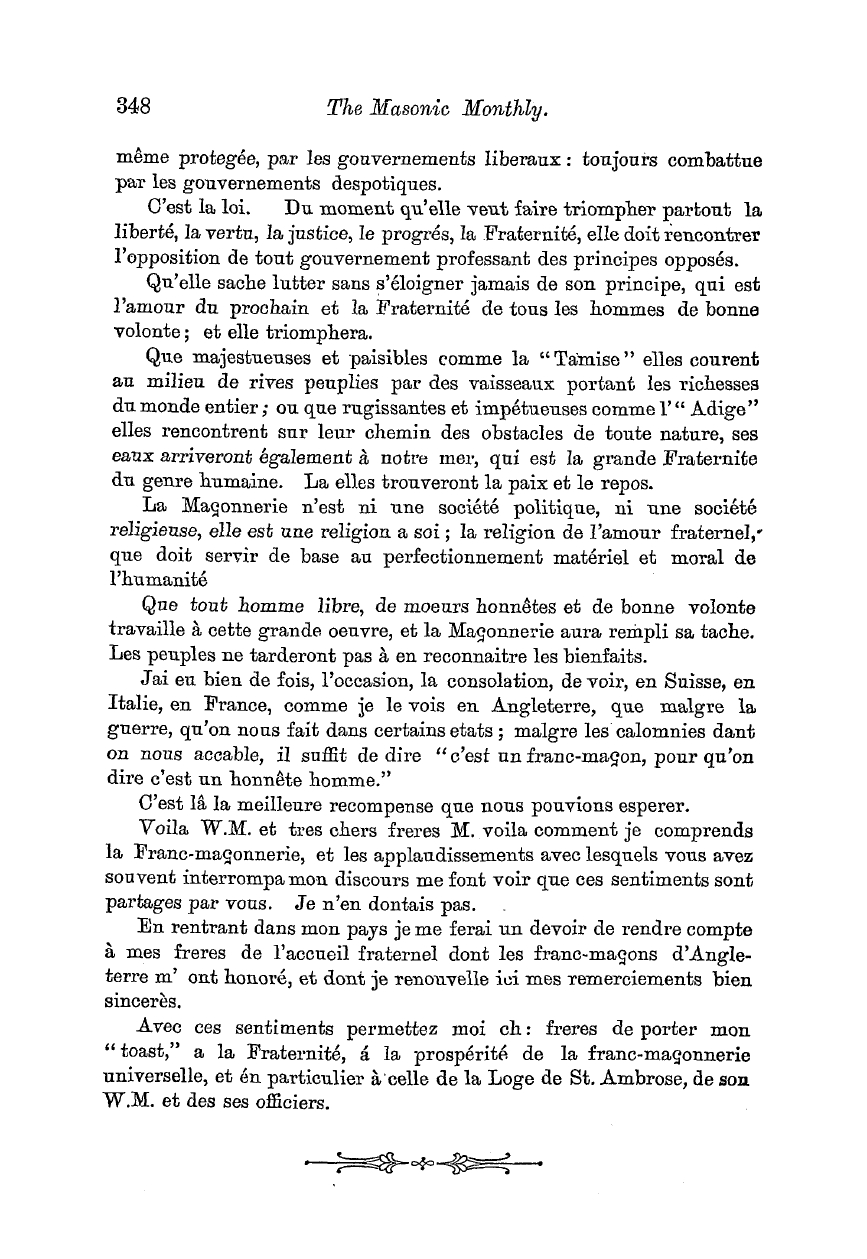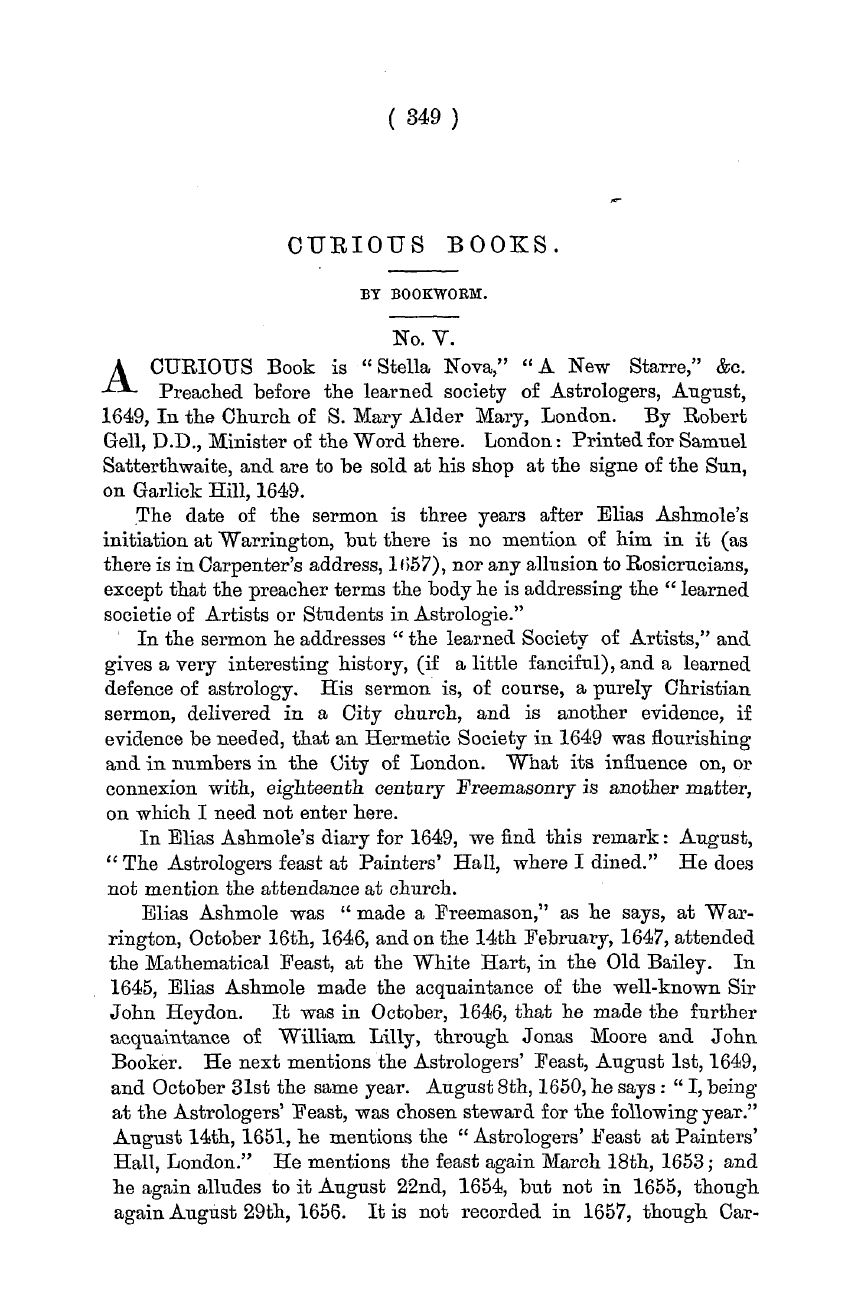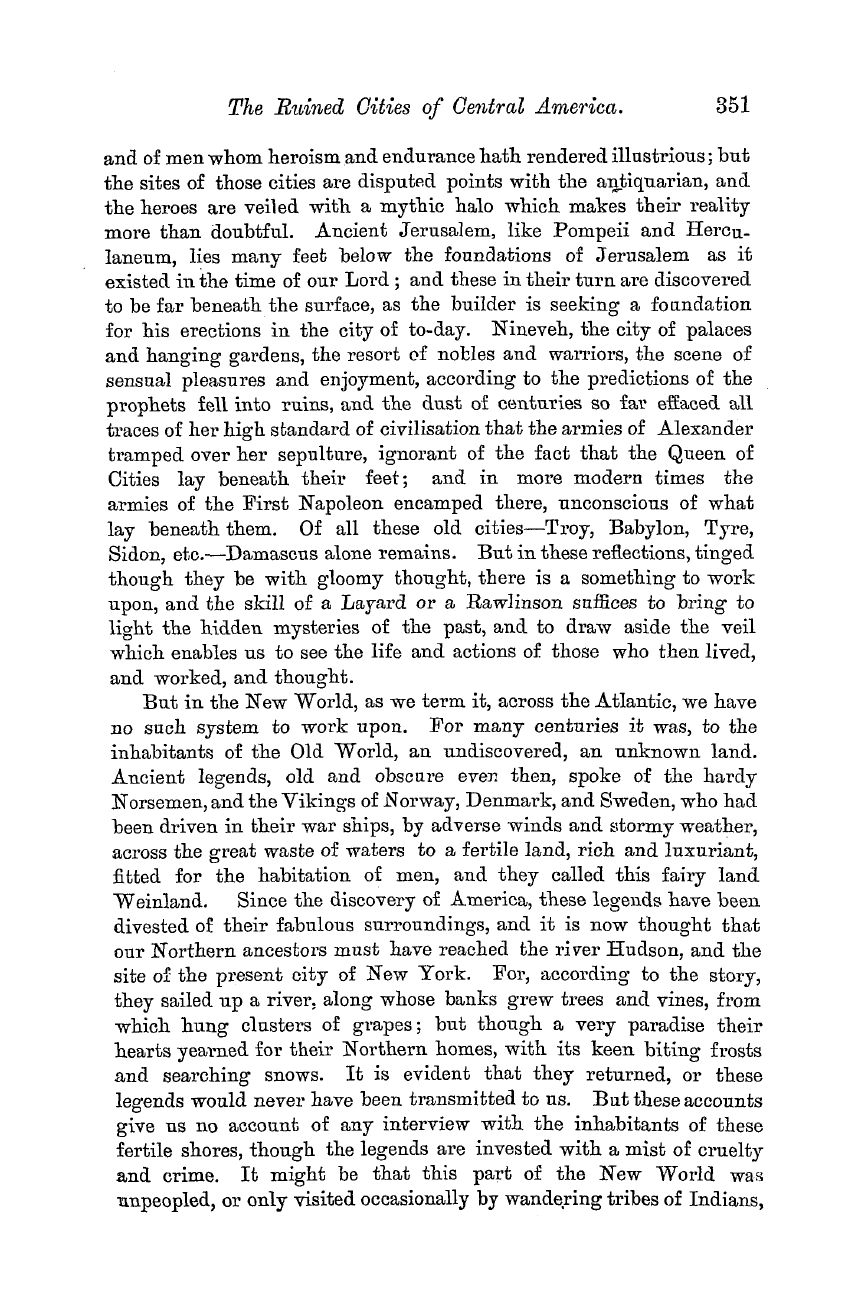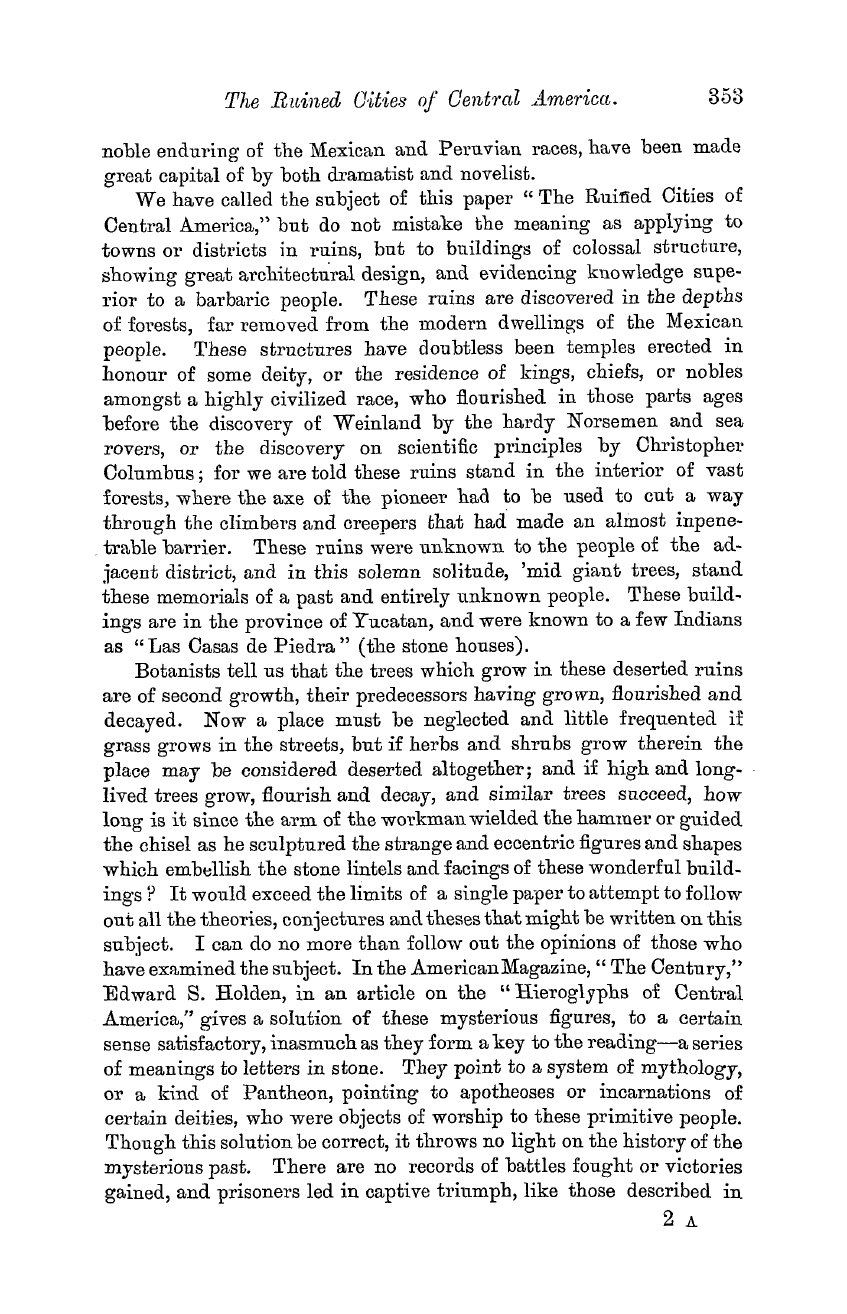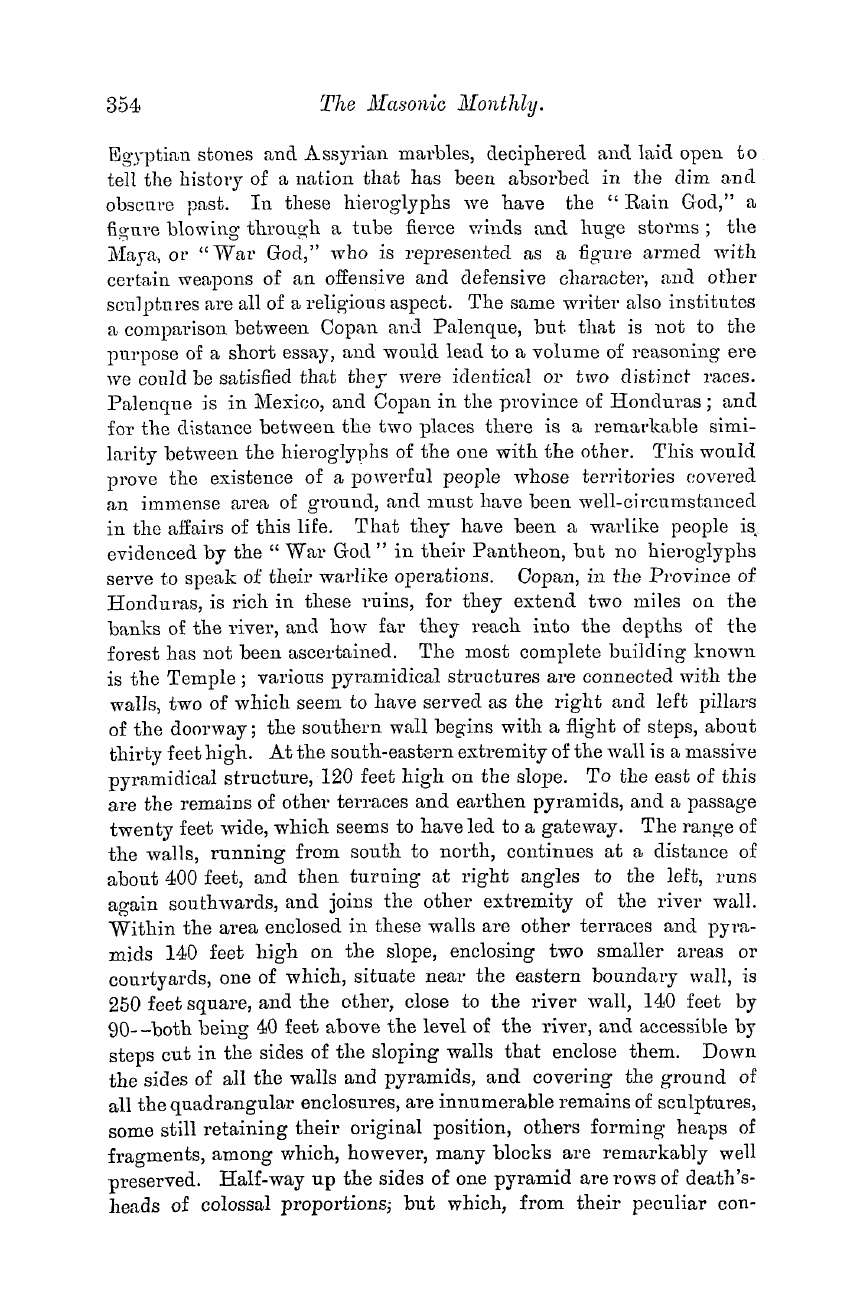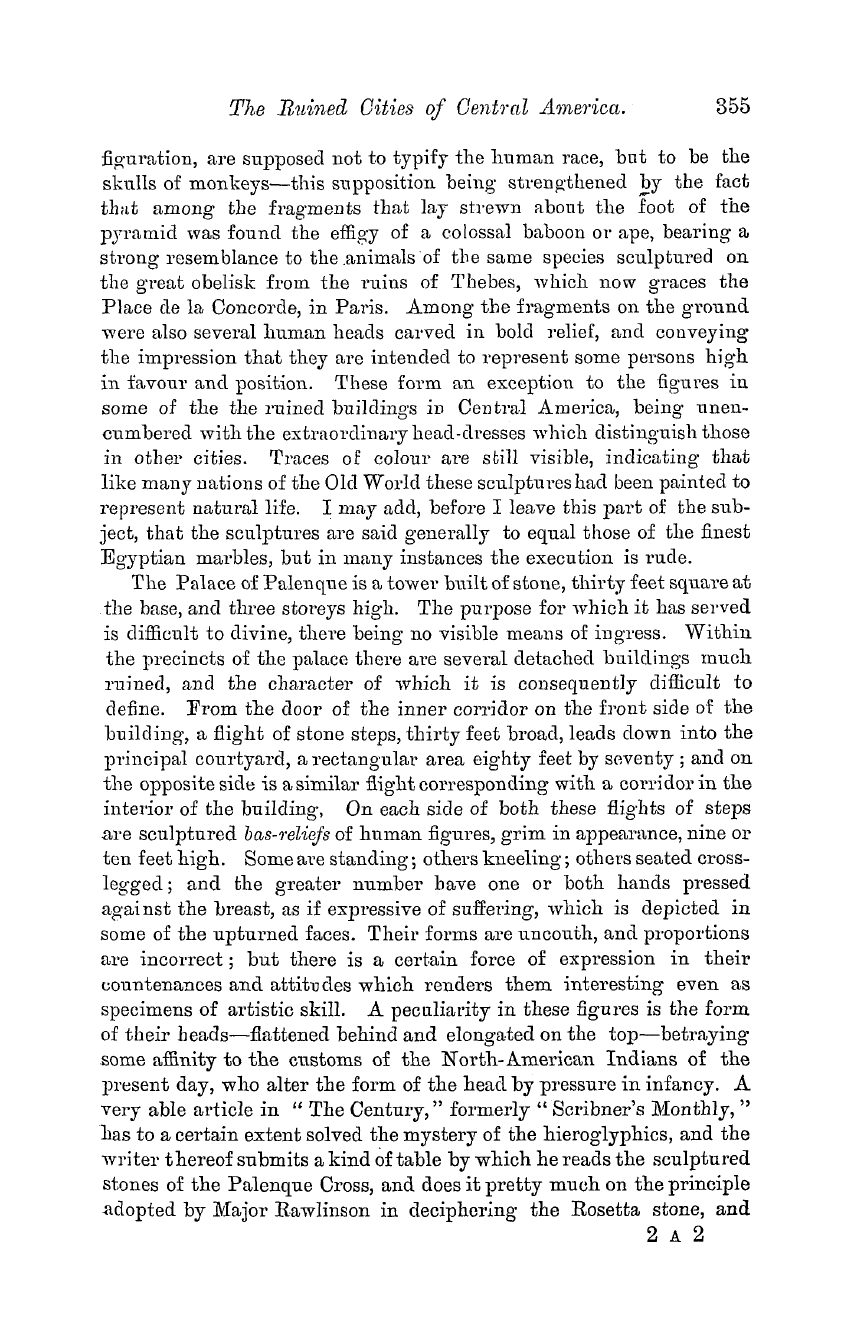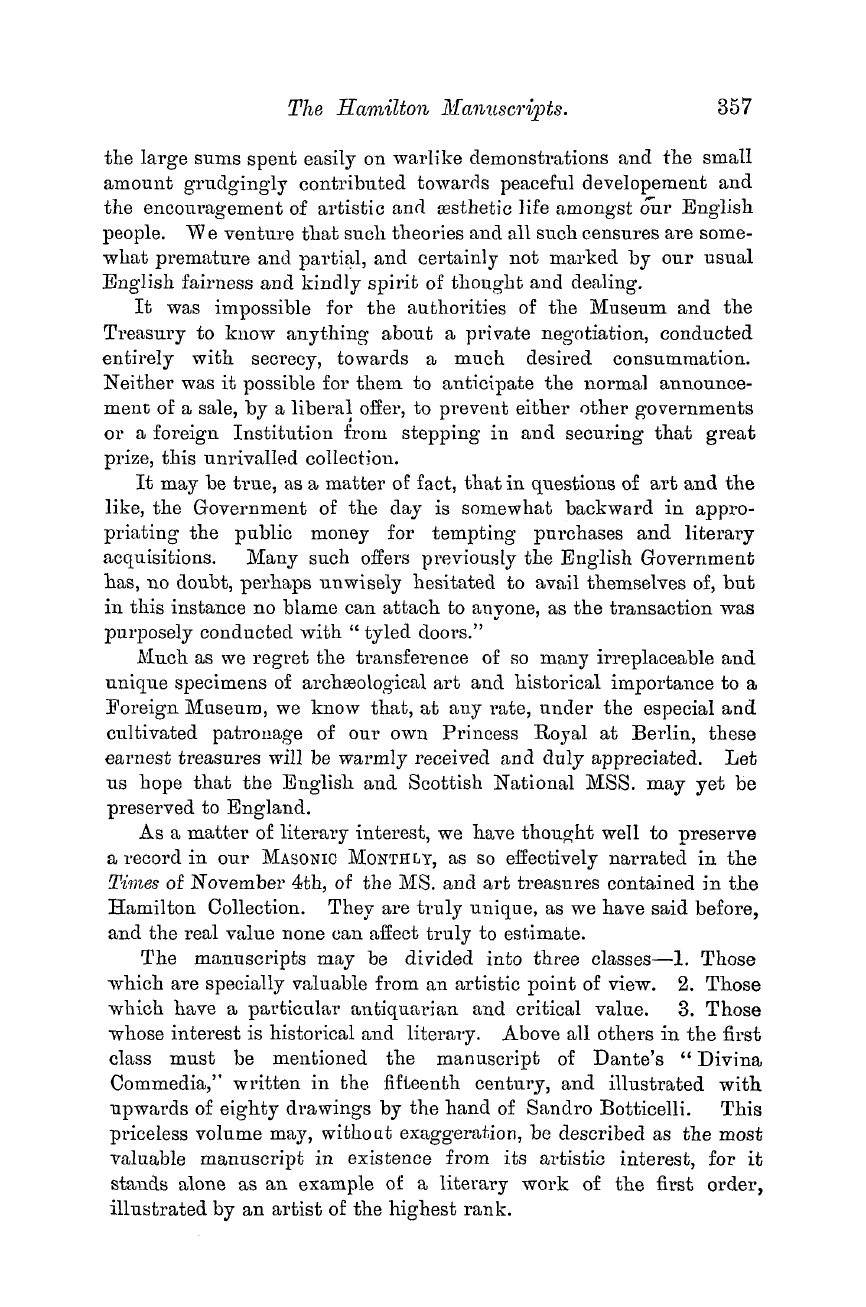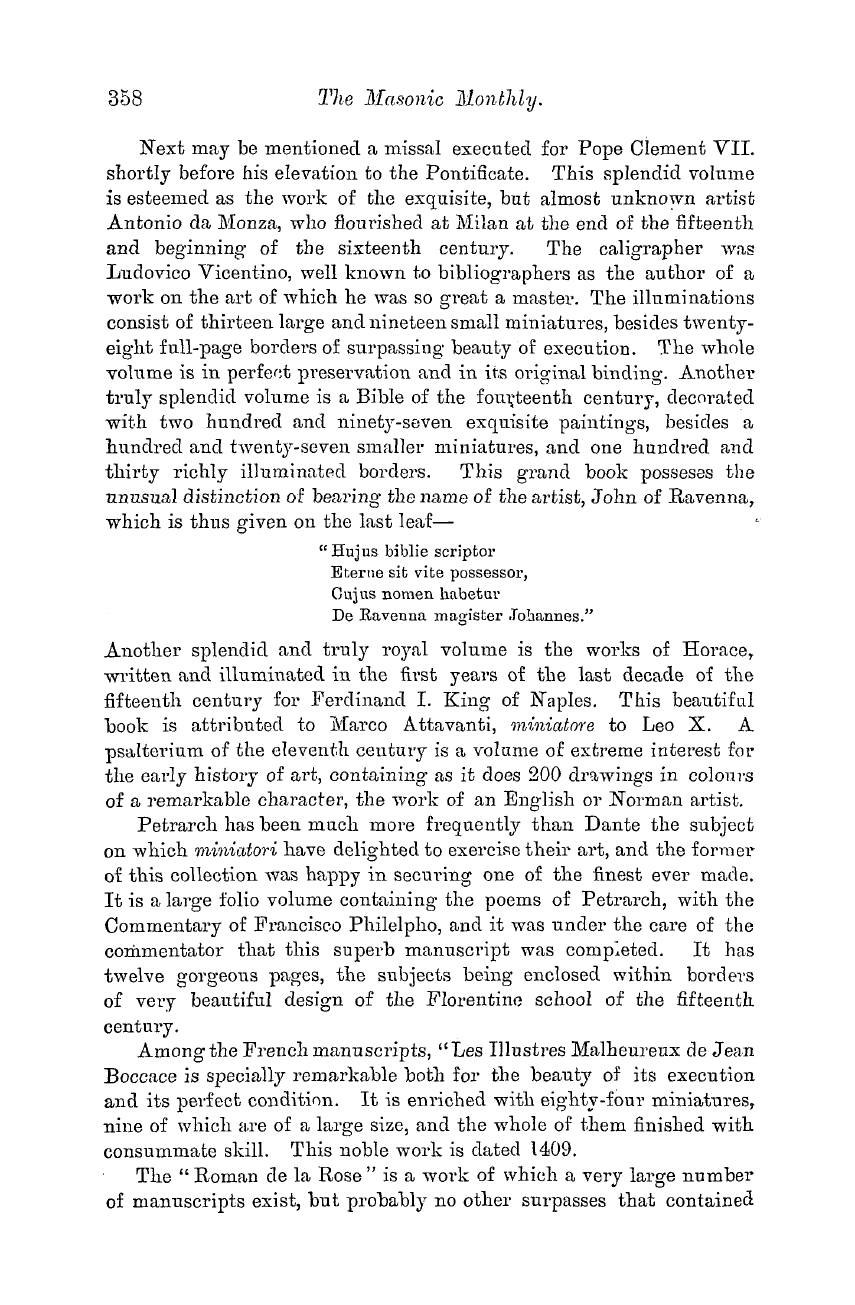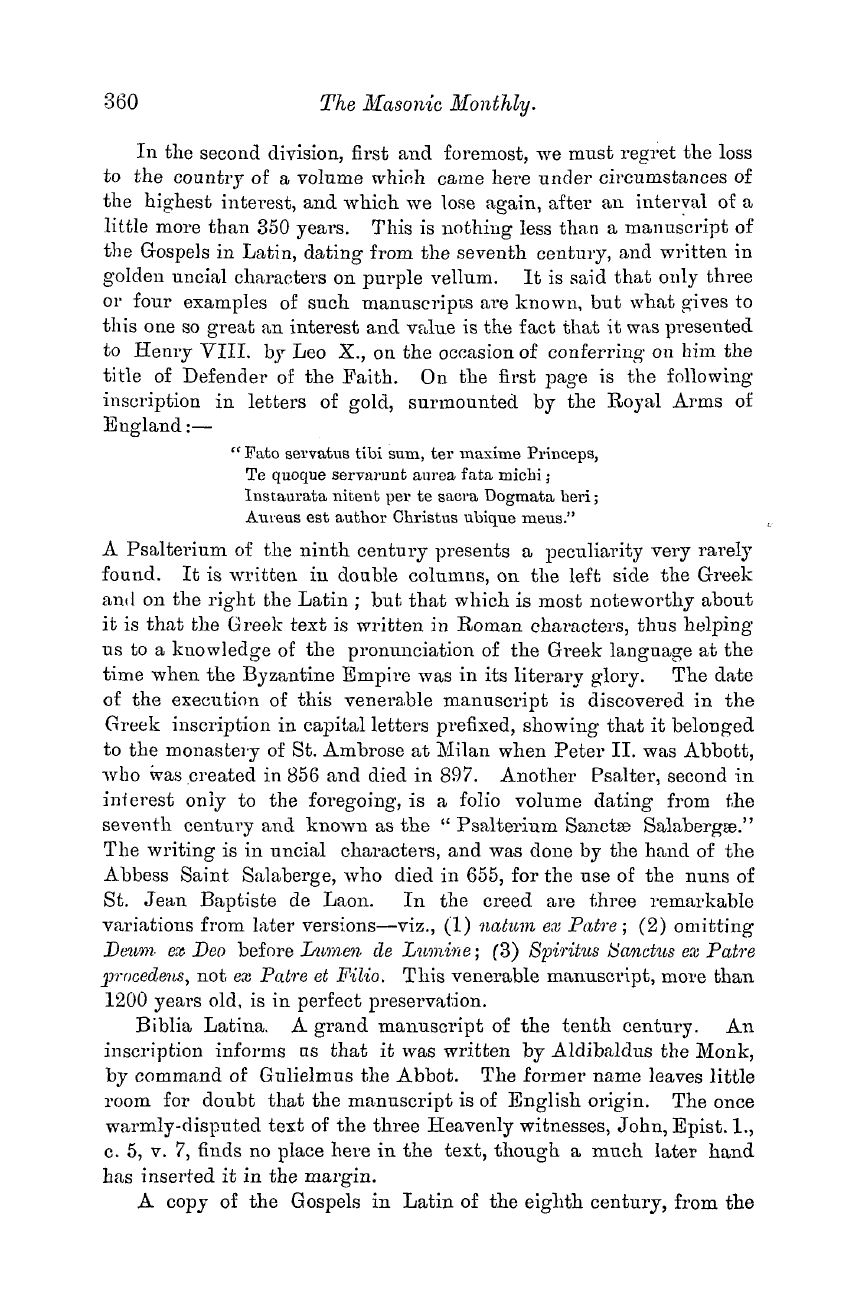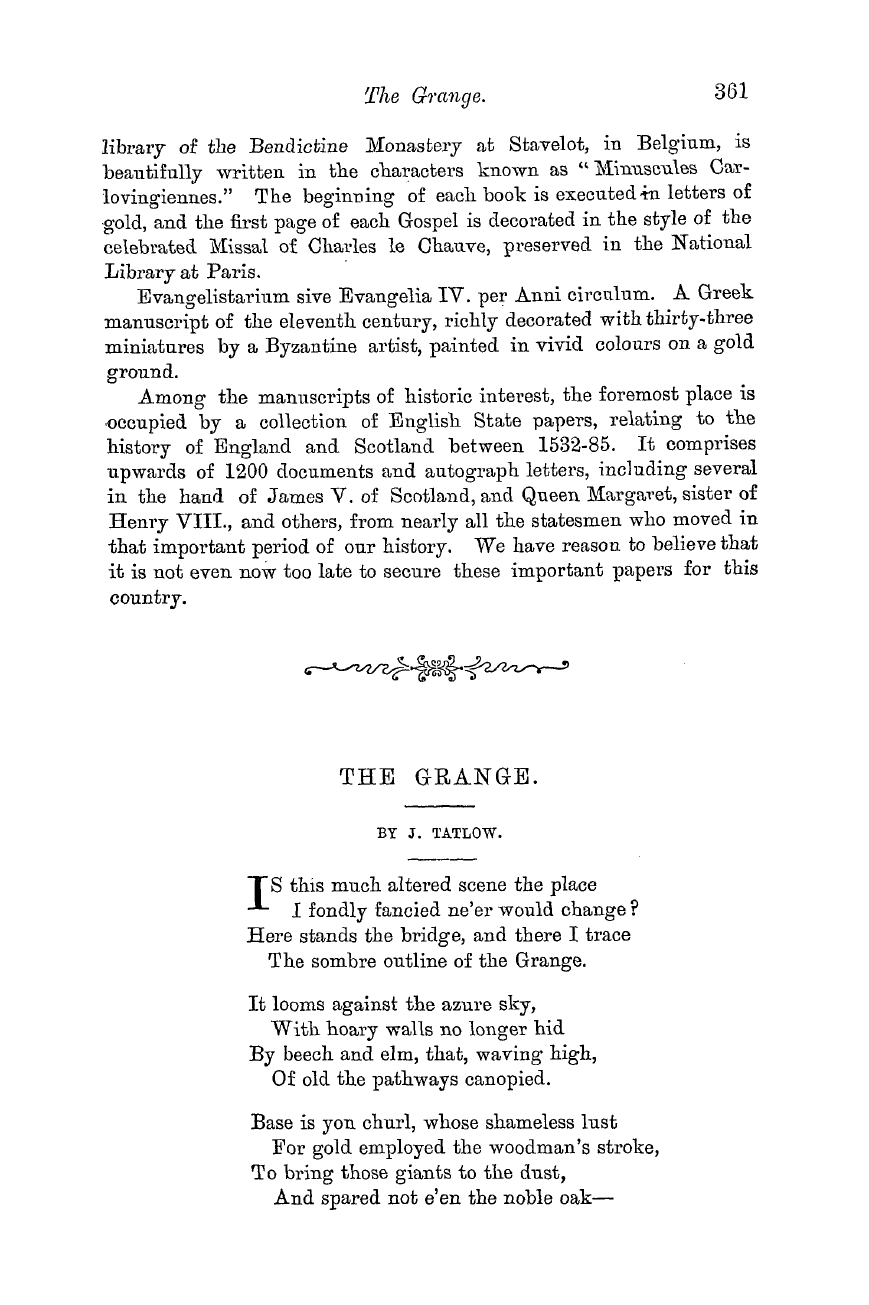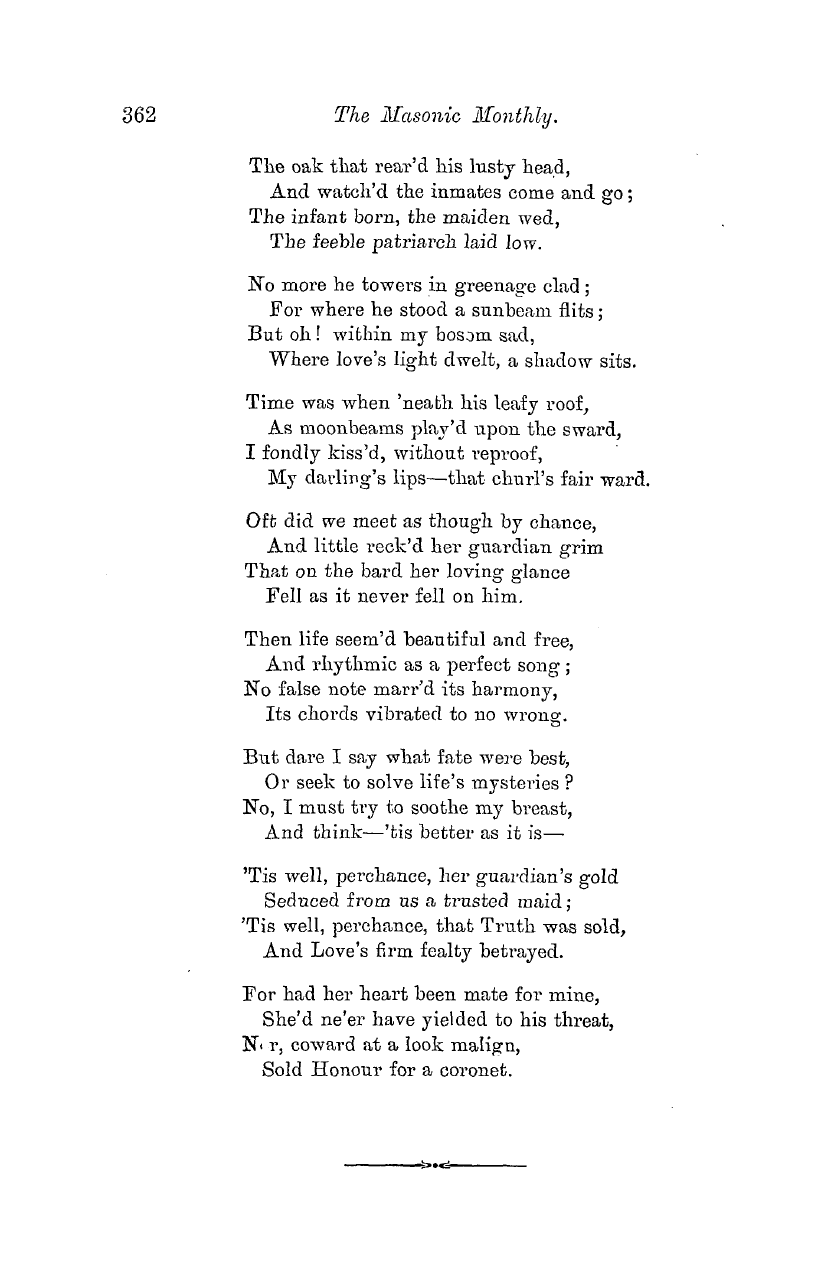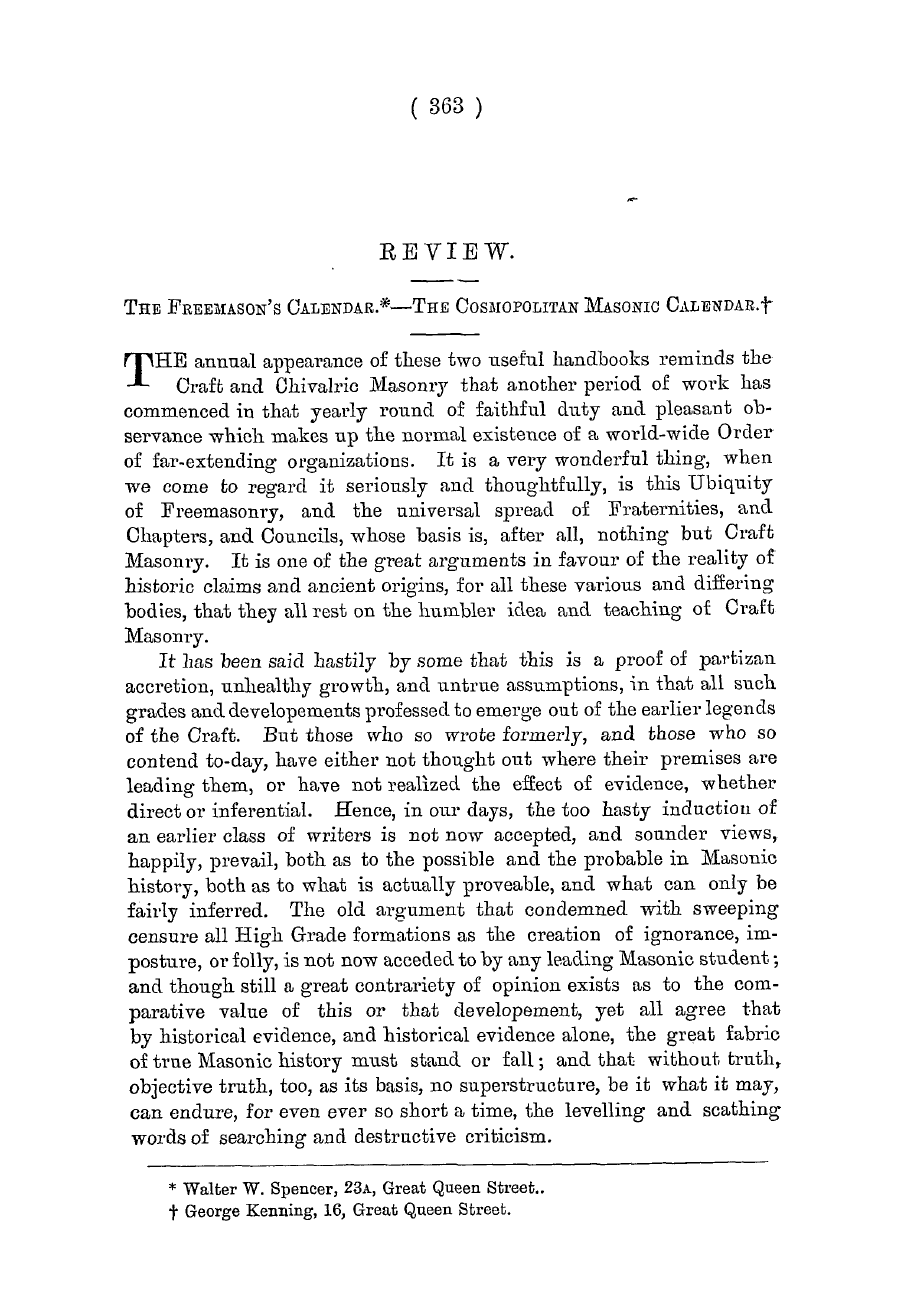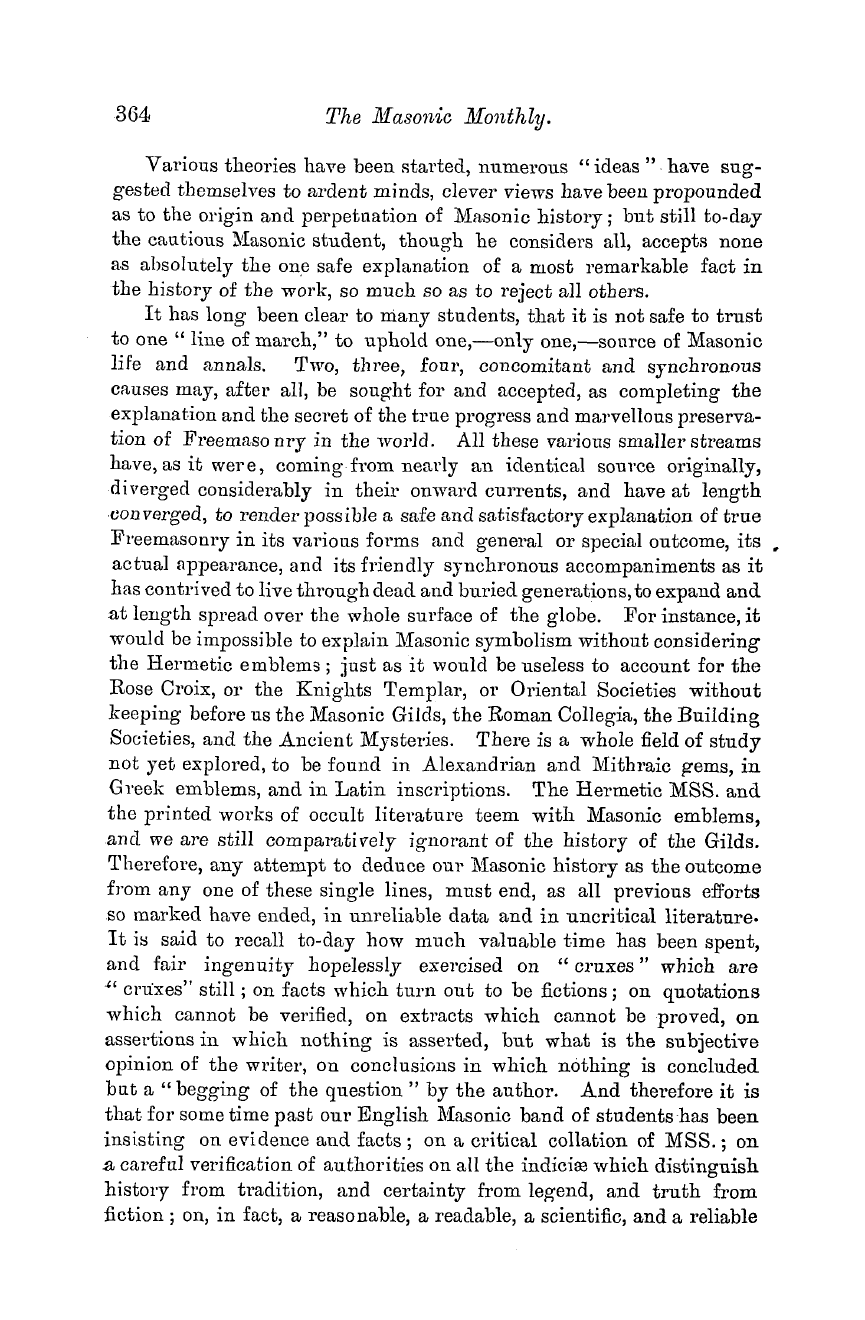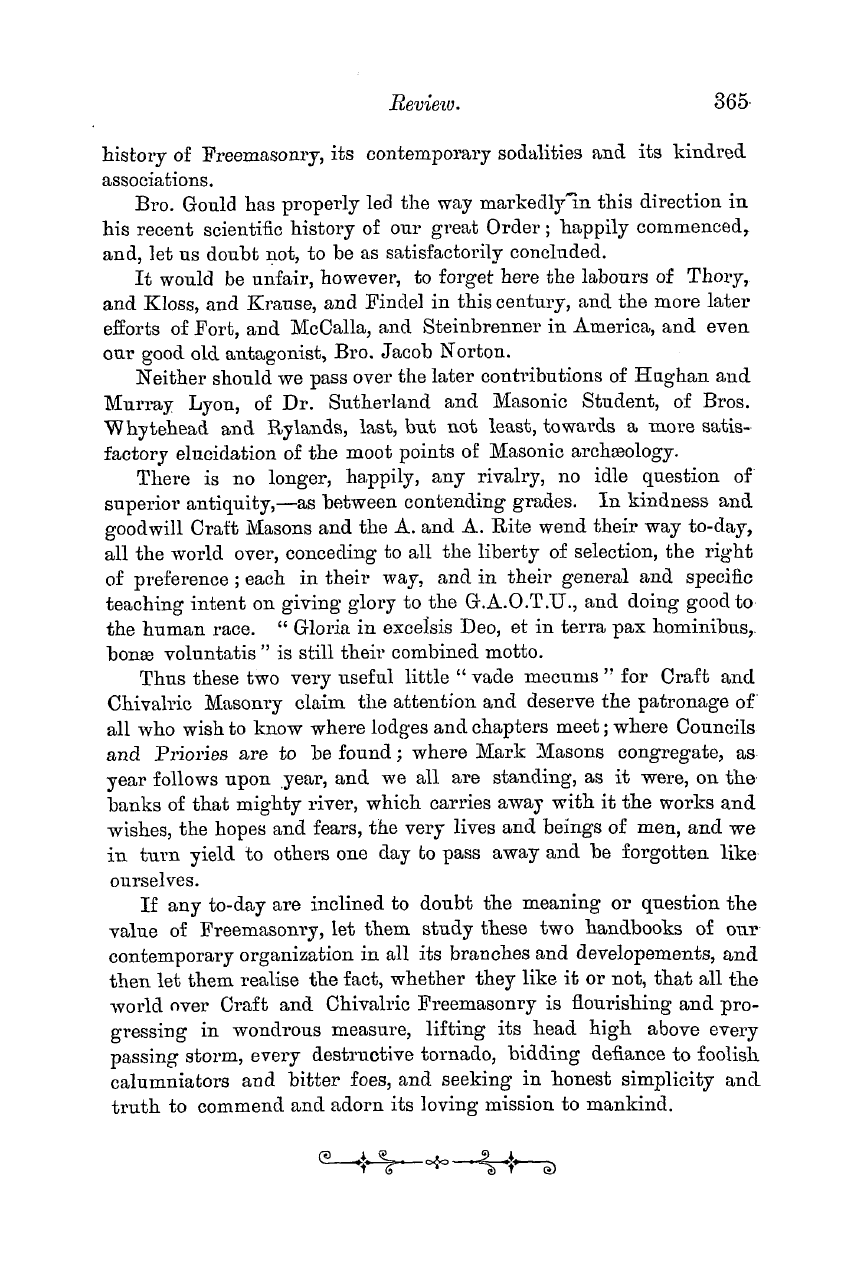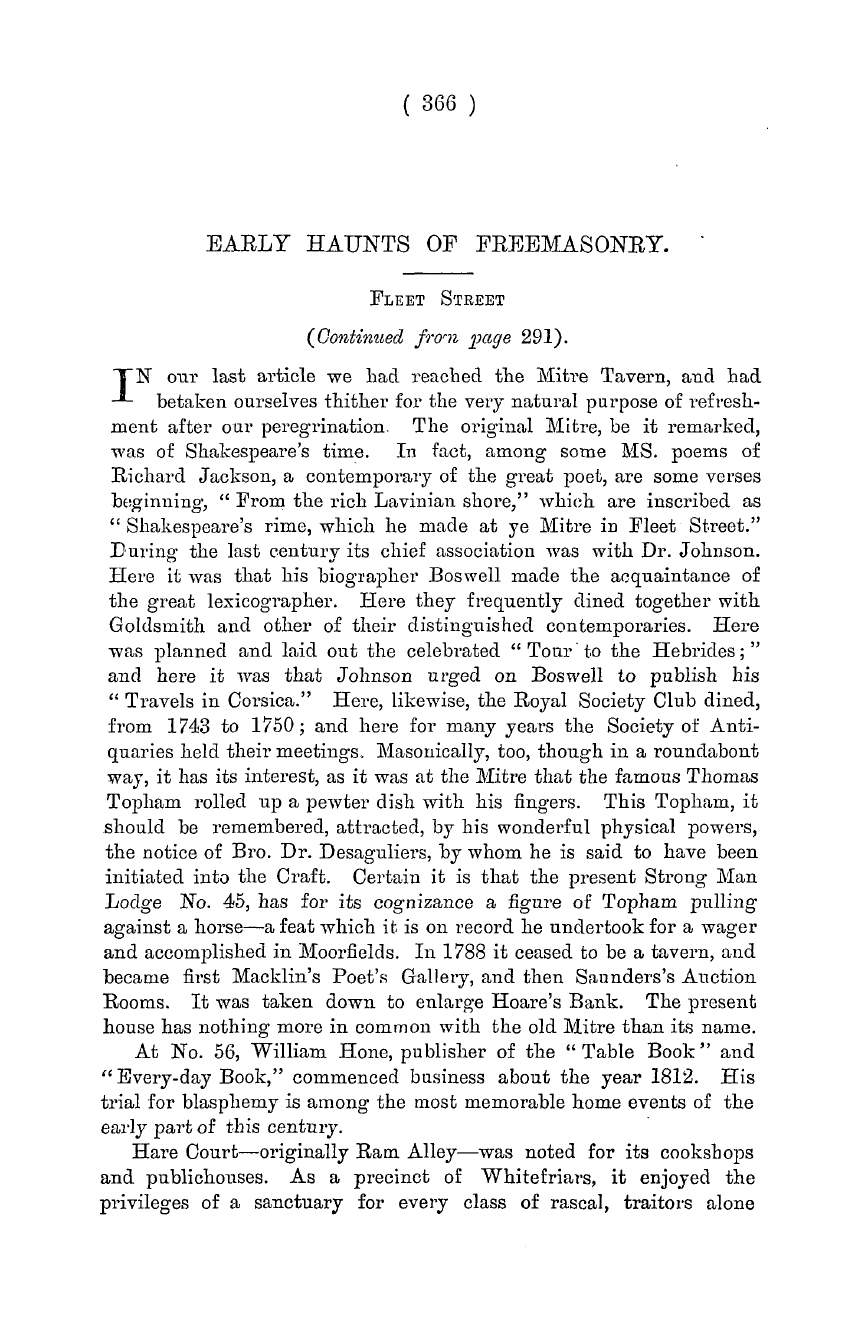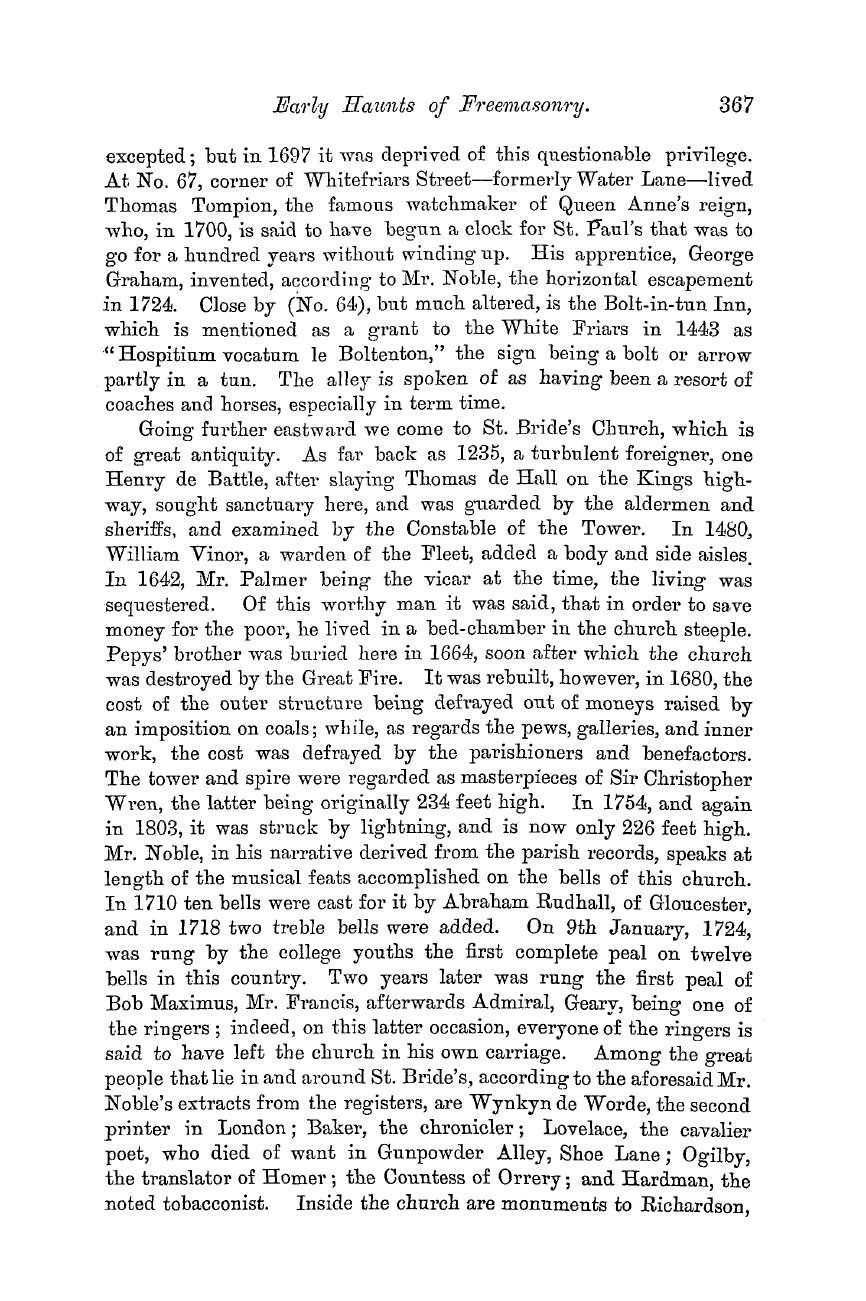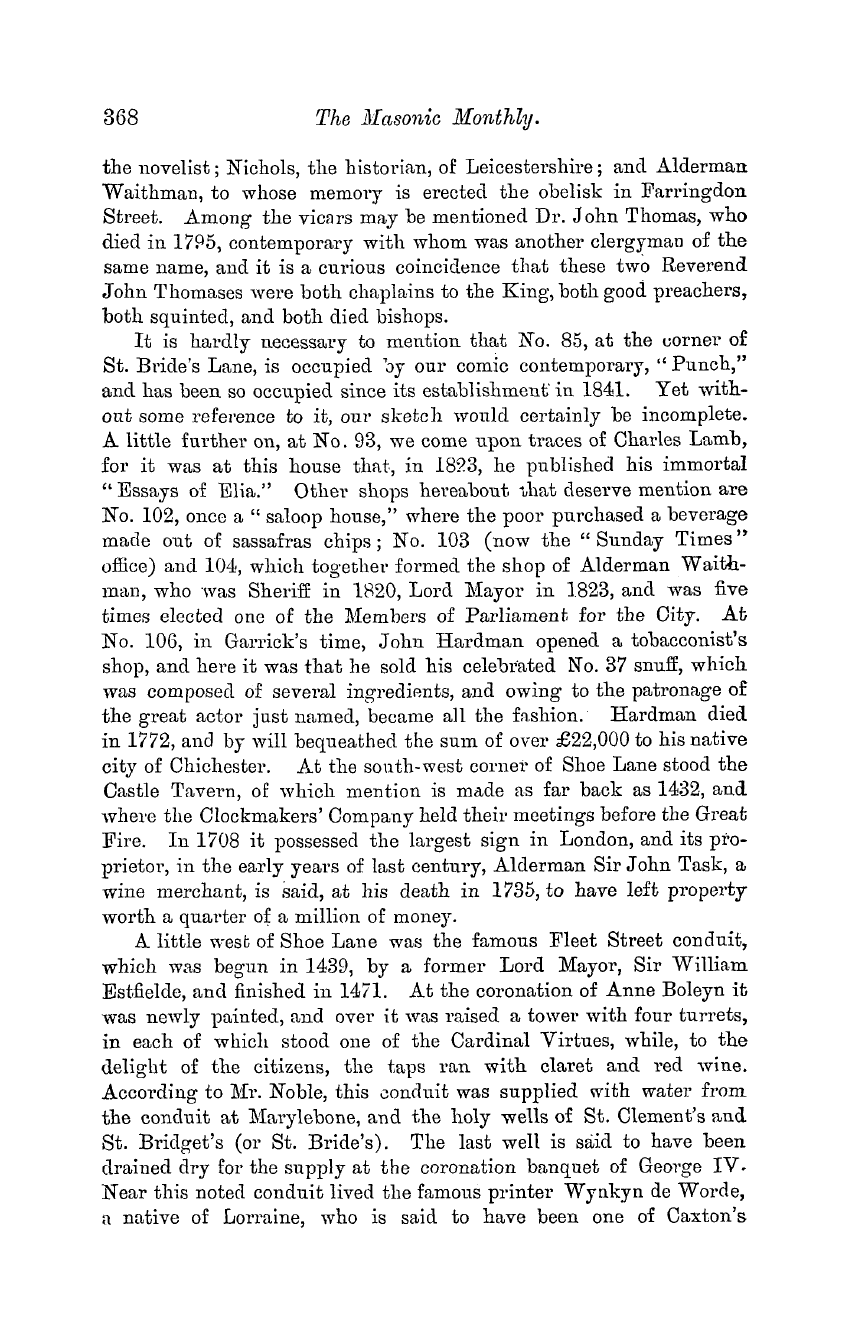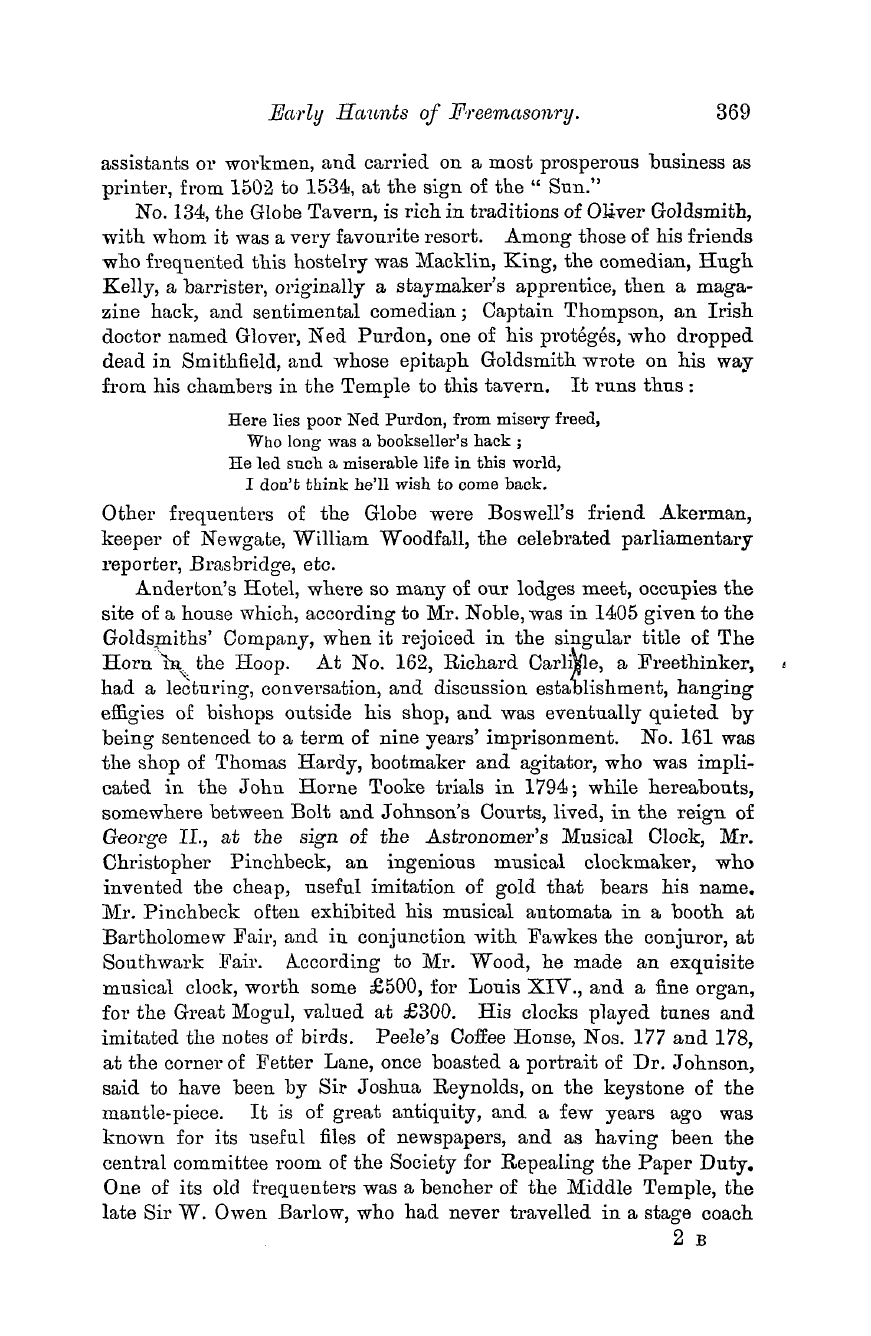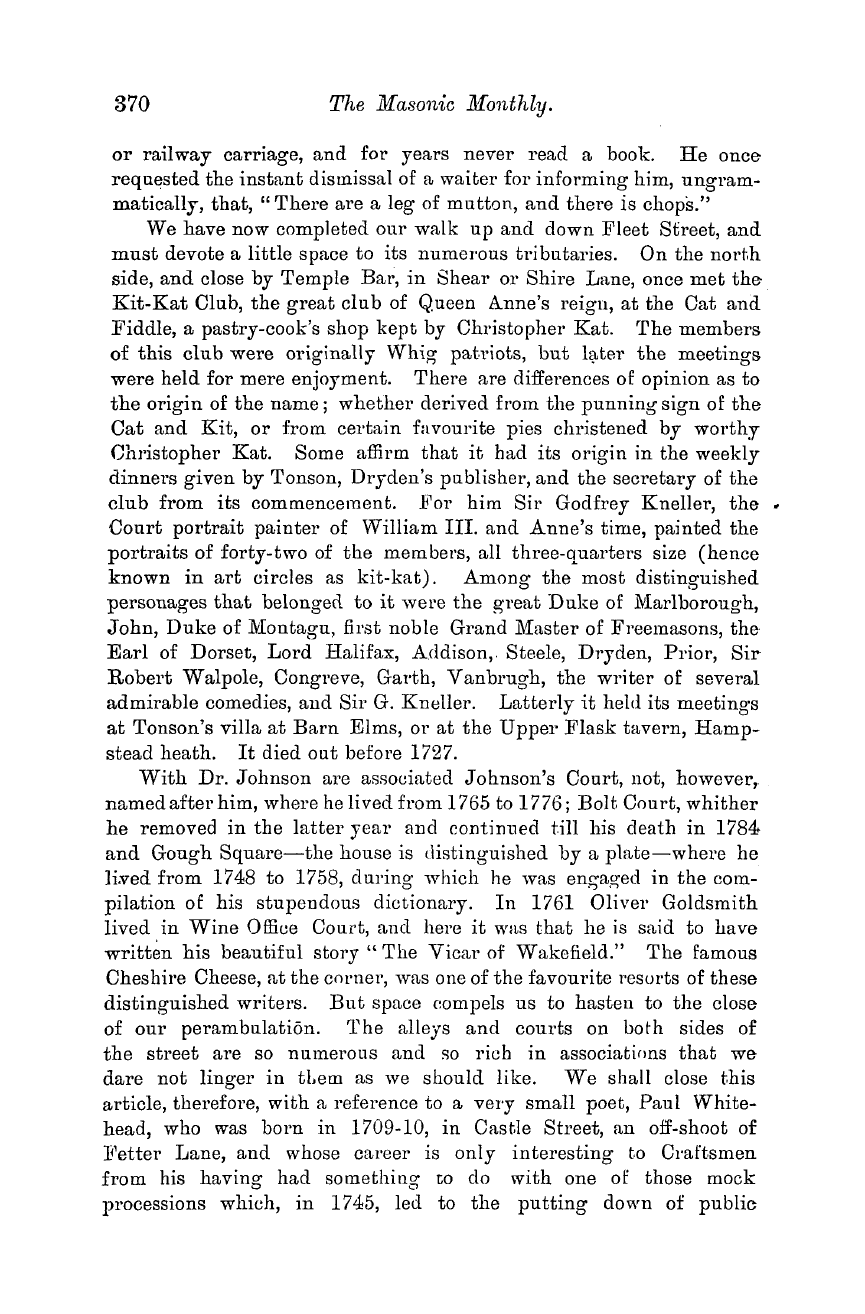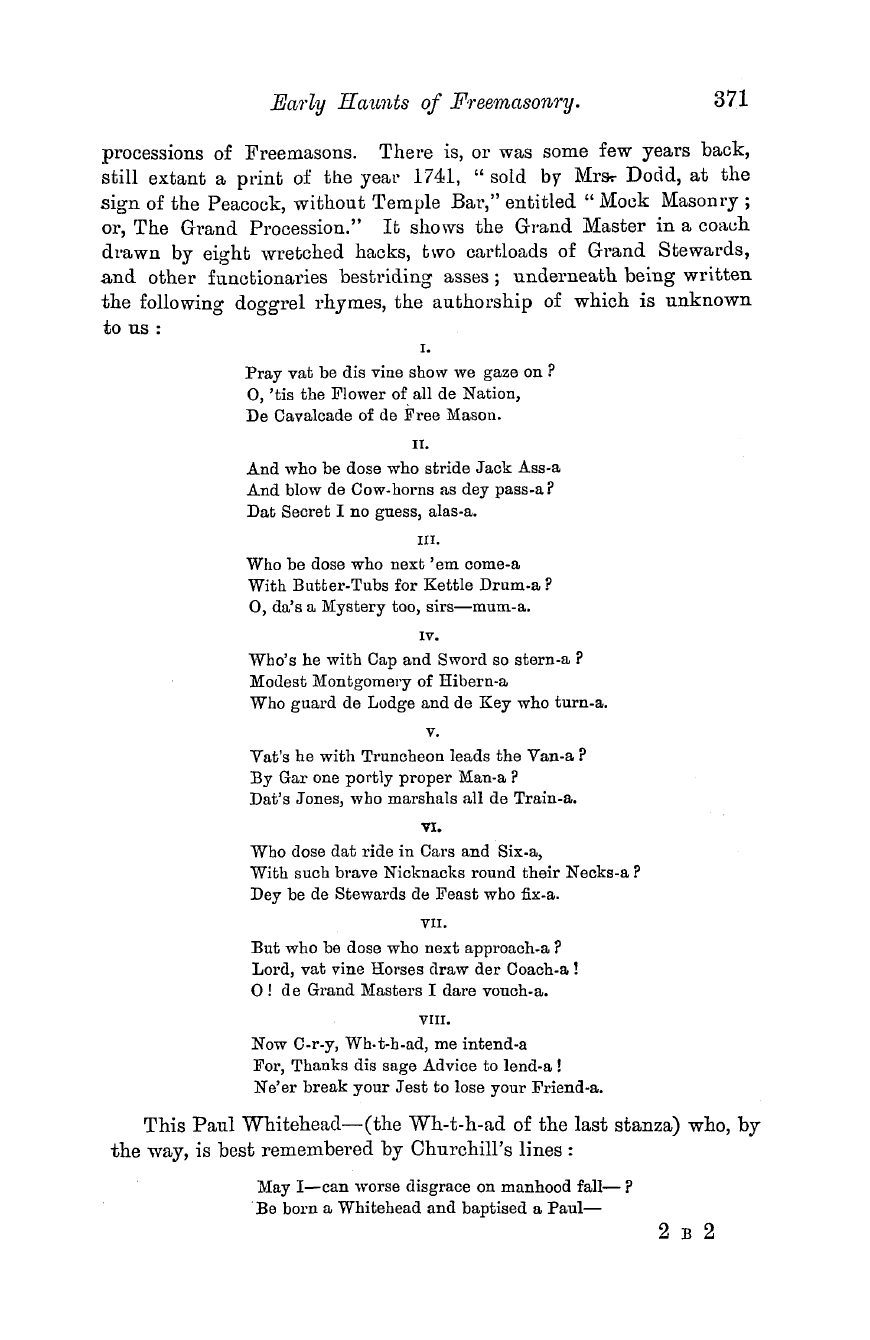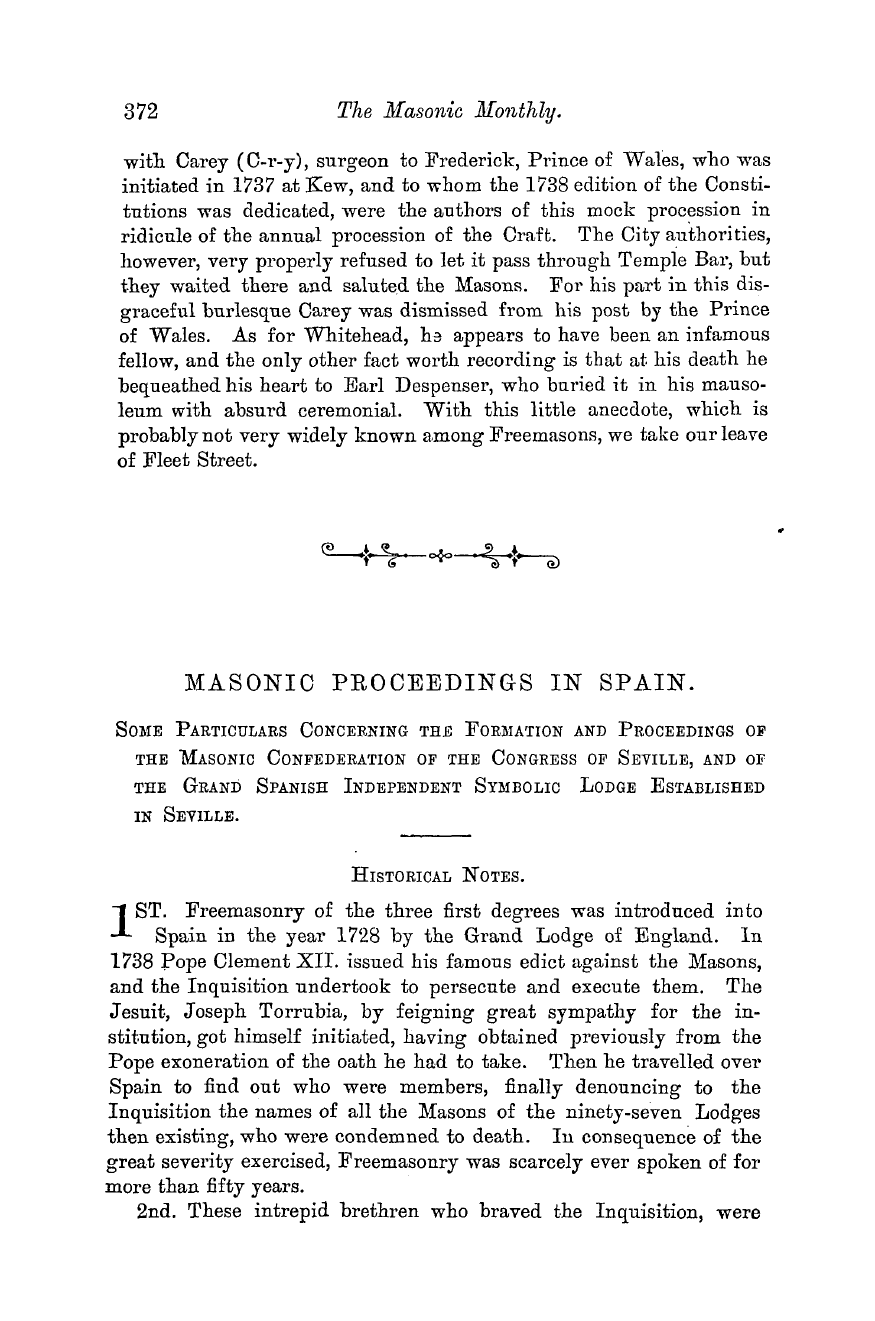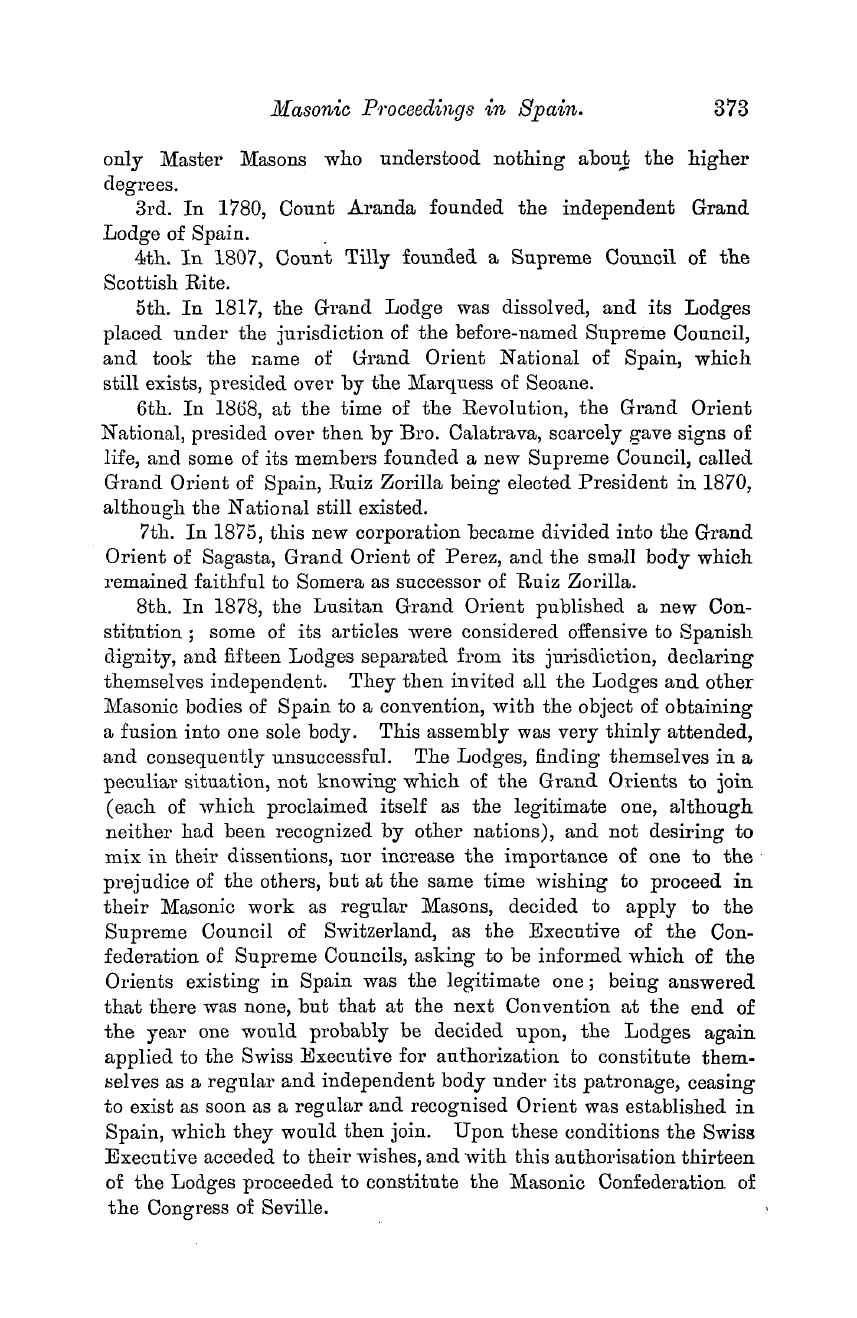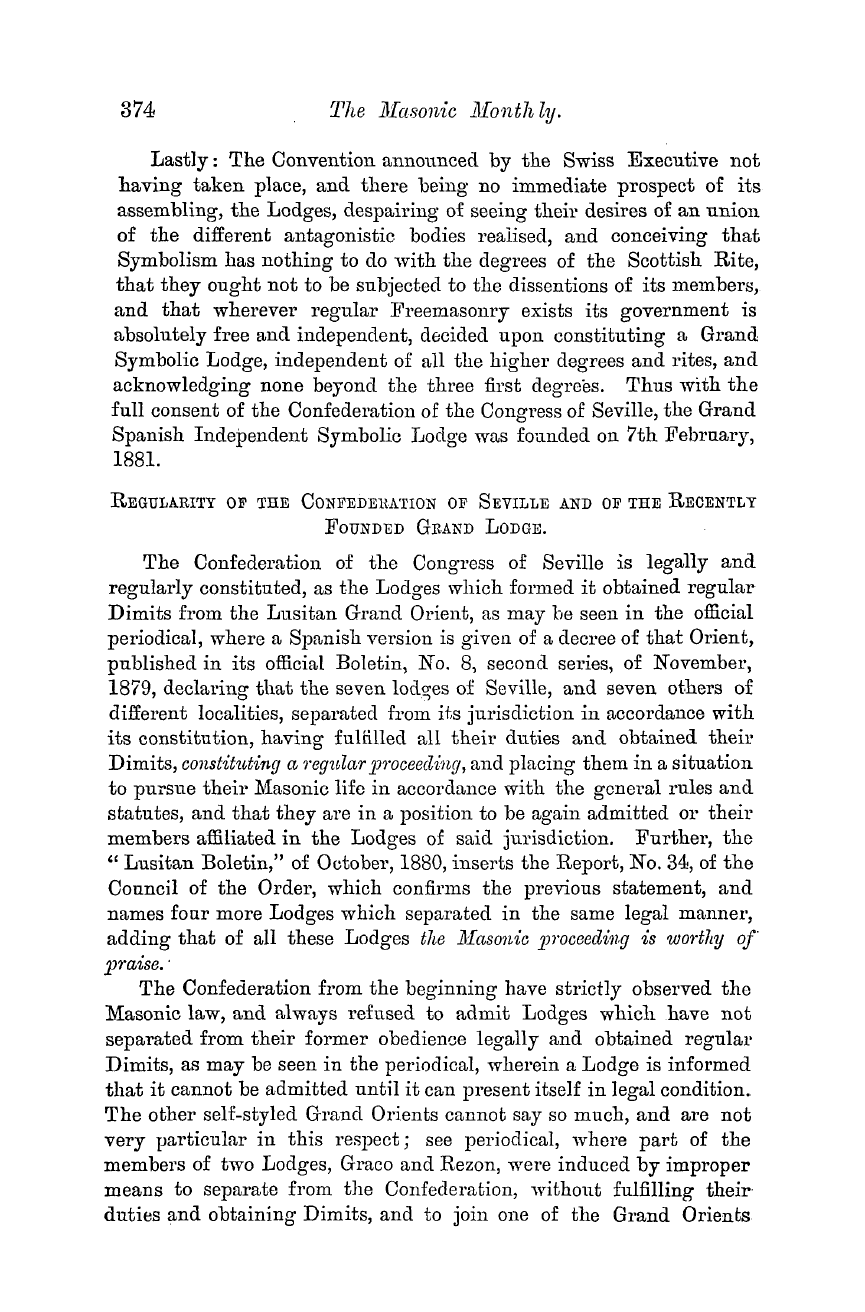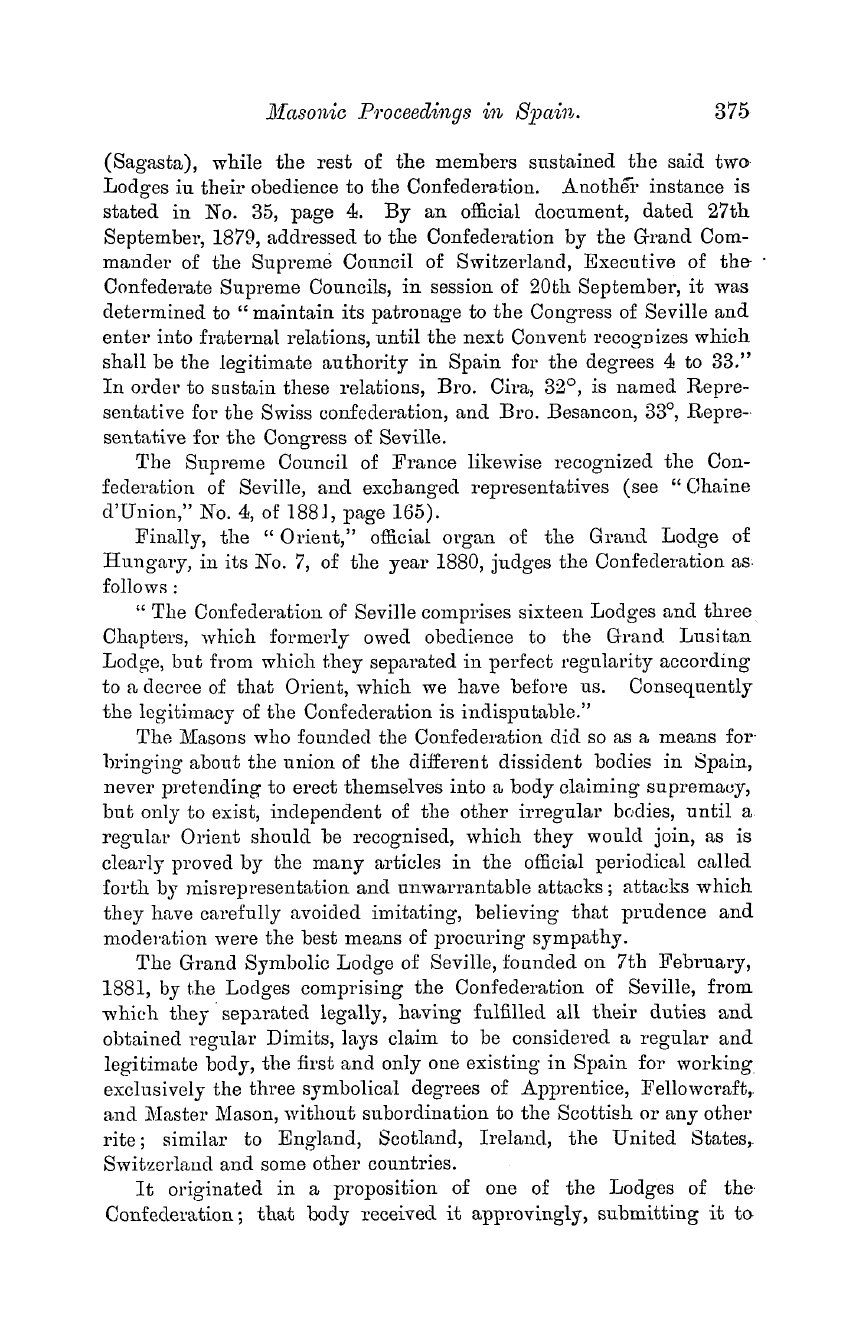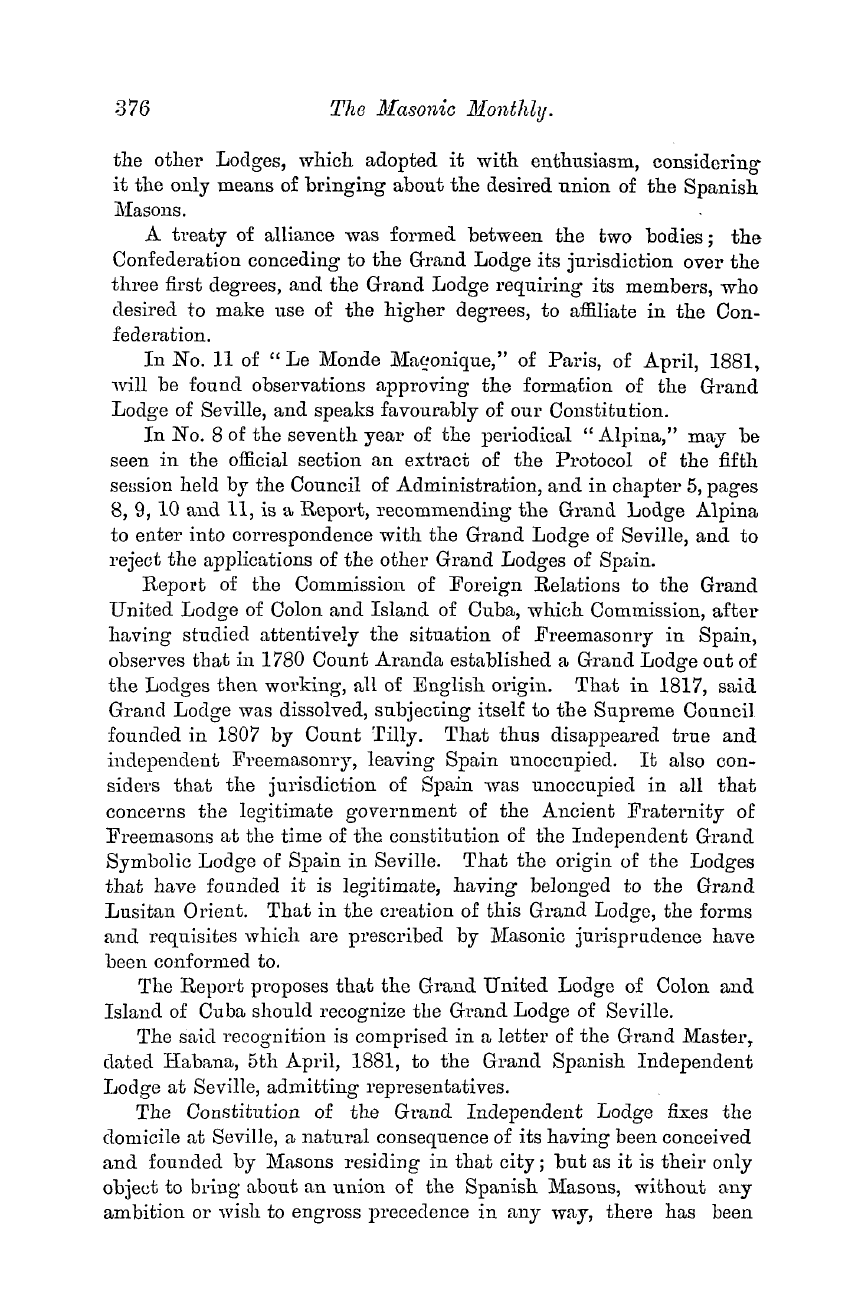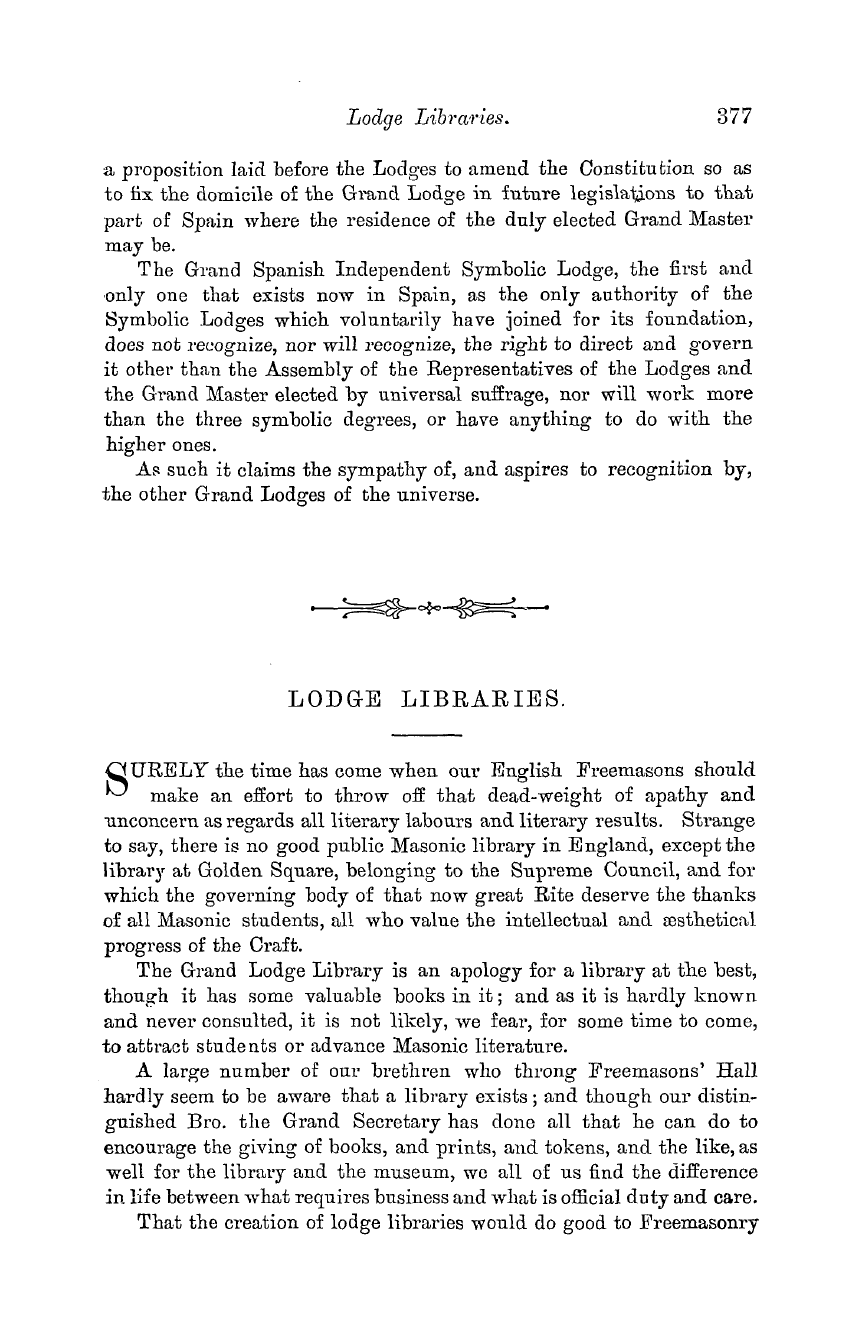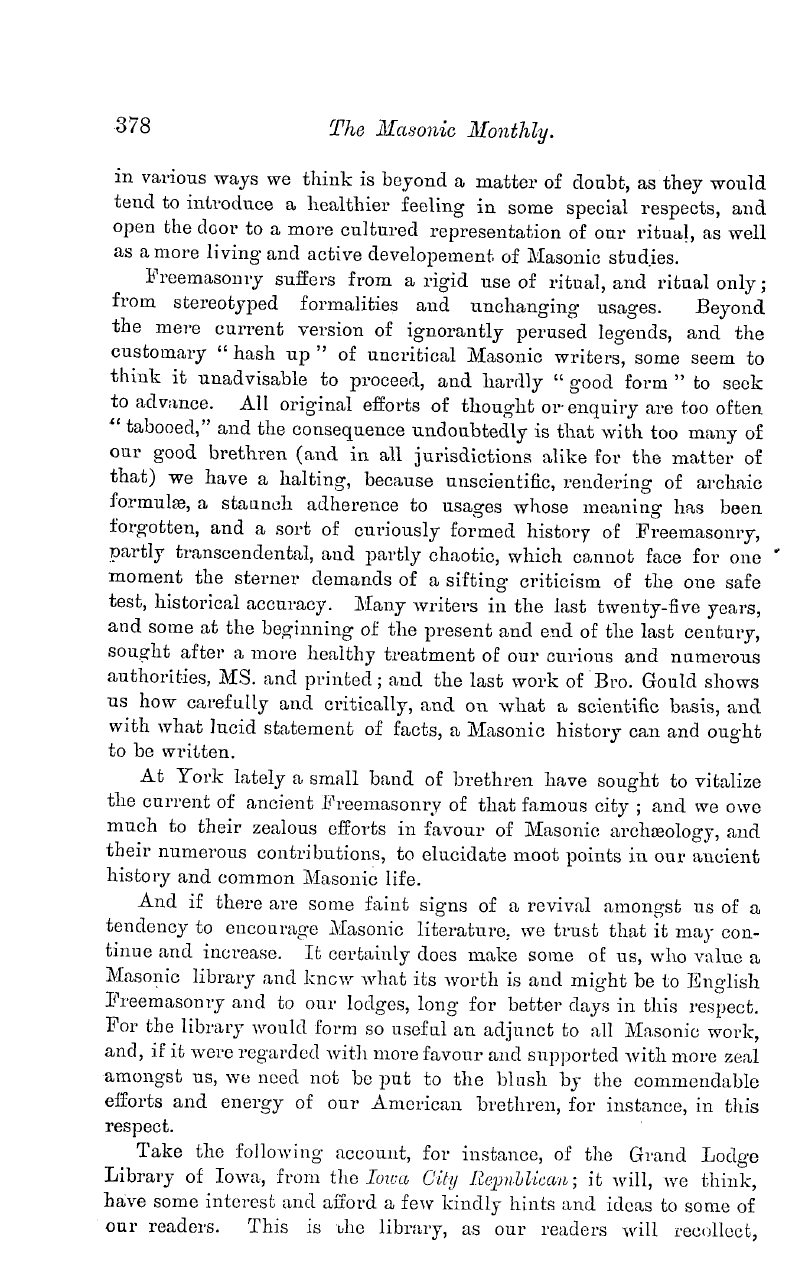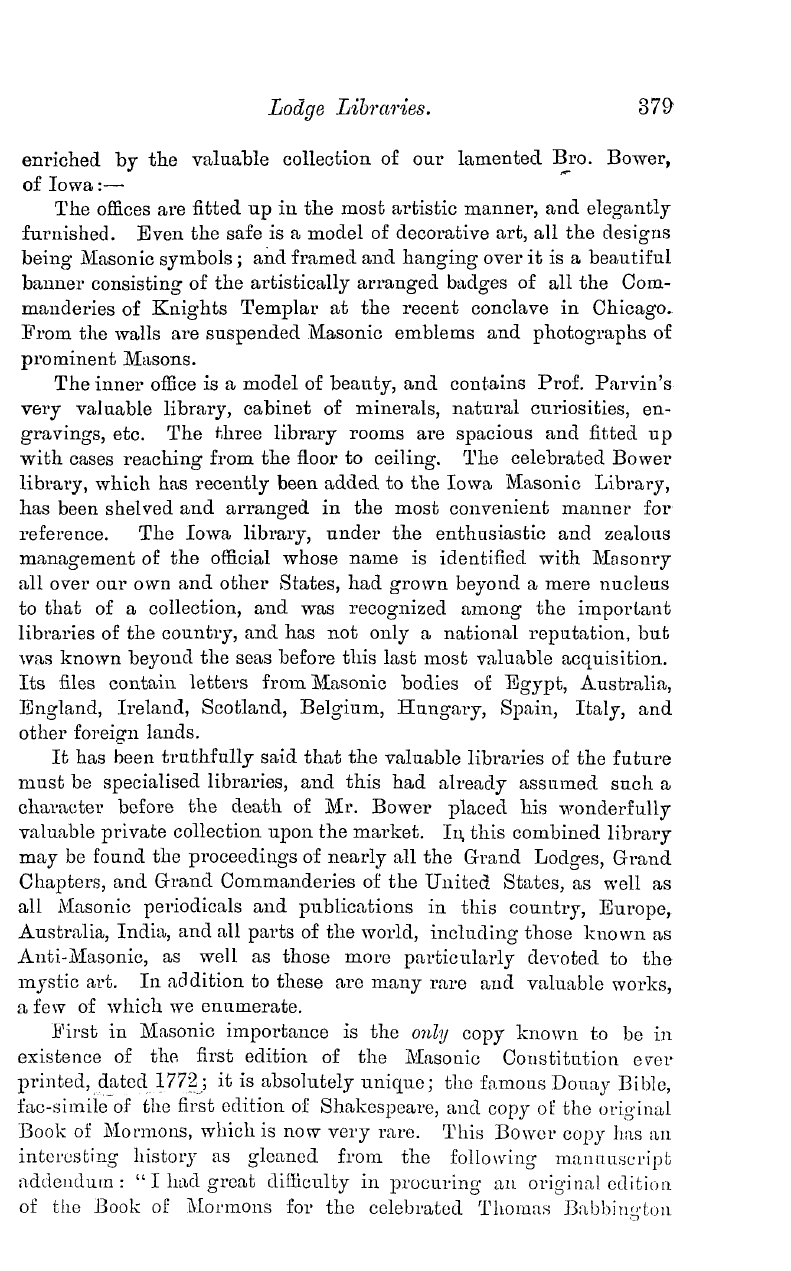Note: This text has been automatically extracted via Optical Character Recognition (OCR) software.
The Legend Of The Introduction Of Masons Into England.
" stormed ; " * and again in the same year a church is fortified by having a trench dug round it , and " the tower , and thqj . urrets which they had erected " are occupied by the soldiers . It is also stated that " it happened that this William , who was the nephew to the
other William [ Cumin ] , was crushed beneath the ruins of a part of the work , which had fallen down on the first day of its erection in consequence of the slig htness of its workmanship . " f William Cumin it was , who " began to convert the church into a castle , plying the work with all diligence ; " and we learn " that a certain stone mason
who was actively employed in this accursed work , whilst he was at work he suddenly became mad . " ^ Bishop Hugh was elected in 1154 to the see of Durham , and he appended to the church the chapel called the Galilee , " of most beautiful workmanship . " He also " caused marble to be imported
from a great distance for the decorations of the entire edifice ; and round the altar he placed several glazed windows , remarkable for the beauty of the figures which they contained . §
Thus must end for the present this series of extracts from our early Chronicles , and indeed they have arrived at a period when the use of stone was , to some extent , commonly employed for important buildings . I cannot , however , help quoting from Walpole , | j who says "it is unlucky for the world that our earliest ancestors were not aware of the
curiosity which would inspire their descendants of knowing minutely everything relating to them . When they placed three or four branches of trees across the trunks of others , and covered them with boughs or straw to keep out the weather , the good people were not apprized that they were discovering architecture , and that it would be learnedl y
agitated some thousand of years afterwards who was the inventor of this stupendous science . In complaisance to our inquiries they would undoubtedly have transmitted an account of the first hovel that was ever built , and from that patriarch hut we should possess a faithful genealogy of all its descendants ; yet such a curiosity would destroy
much greater treasures ; it would annihilate fables , researches , conjectures , hypotheses , disputes , blunders , and dissertations , that library of human impertinence . "
Note: This text has been automatically extracted via Optical Character Recognition (OCR) software.
The Legend Of The Introduction Of Masons Into England.
" stormed ; " * and again in the same year a church is fortified by having a trench dug round it , and " the tower , and thqj . urrets which they had erected " are occupied by the soldiers . It is also stated that " it happened that this William , who was the nephew to the
other William [ Cumin ] , was crushed beneath the ruins of a part of the work , which had fallen down on the first day of its erection in consequence of the slig htness of its workmanship . " f William Cumin it was , who " began to convert the church into a castle , plying the work with all diligence ; " and we learn " that a certain stone mason
who was actively employed in this accursed work , whilst he was at work he suddenly became mad . " ^ Bishop Hugh was elected in 1154 to the see of Durham , and he appended to the church the chapel called the Galilee , " of most beautiful workmanship . " He also " caused marble to be imported
from a great distance for the decorations of the entire edifice ; and round the altar he placed several glazed windows , remarkable for the beauty of the figures which they contained . §
Thus must end for the present this series of extracts from our early Chronicles , and indeed they have arrived at a period when the use of stone was , to some extent , commonly employed for important buildings . I cannot , however , help quoting from Walpole , | j who says "it is unlucky for the world that our earliest ancestors were not aware of the
curiosity which would inspire their descendants of knowing minutely everything relating to them . When they placed three or four branches of trees across the trunks of others , and covered them with boughs or straw to keep out the weather , the good people were not apprized that they were discovering architecture , and that it would be learnedl y
agitated some thousand of years afterwards who was the inventor of this stupendous science . In complaisance to our inquiries they would undoubtedly have transmitted an account of the first hovel that was ever built , and from that patriarch hut we should possess a faithful genealogy of all its descendants ; yet such a curiosity would destroy
much greater treasures ; it would annihilate fables , researches , conjectures , hypotheses , disputes , blunders , and dissertations , that library of human impertinence . "
